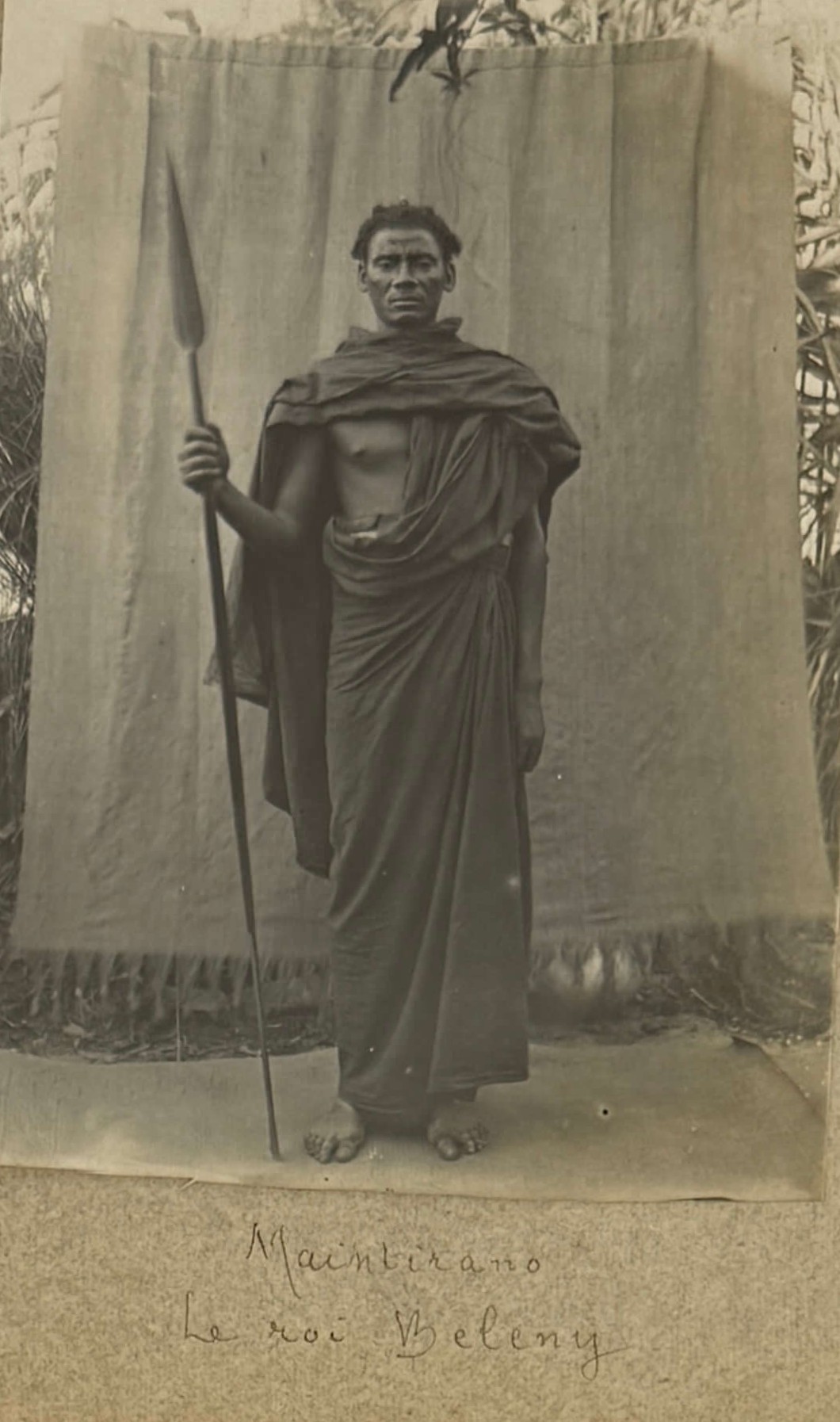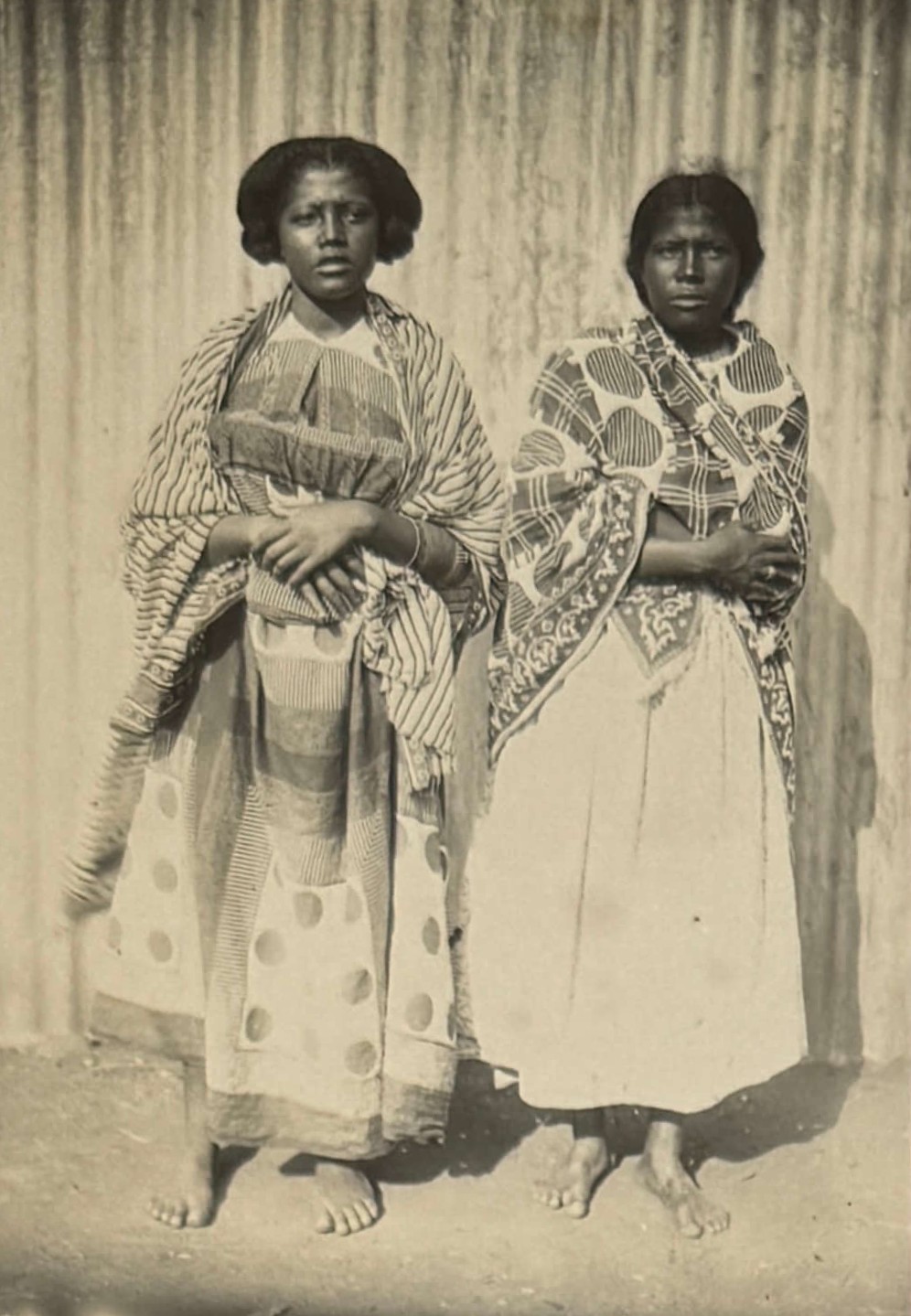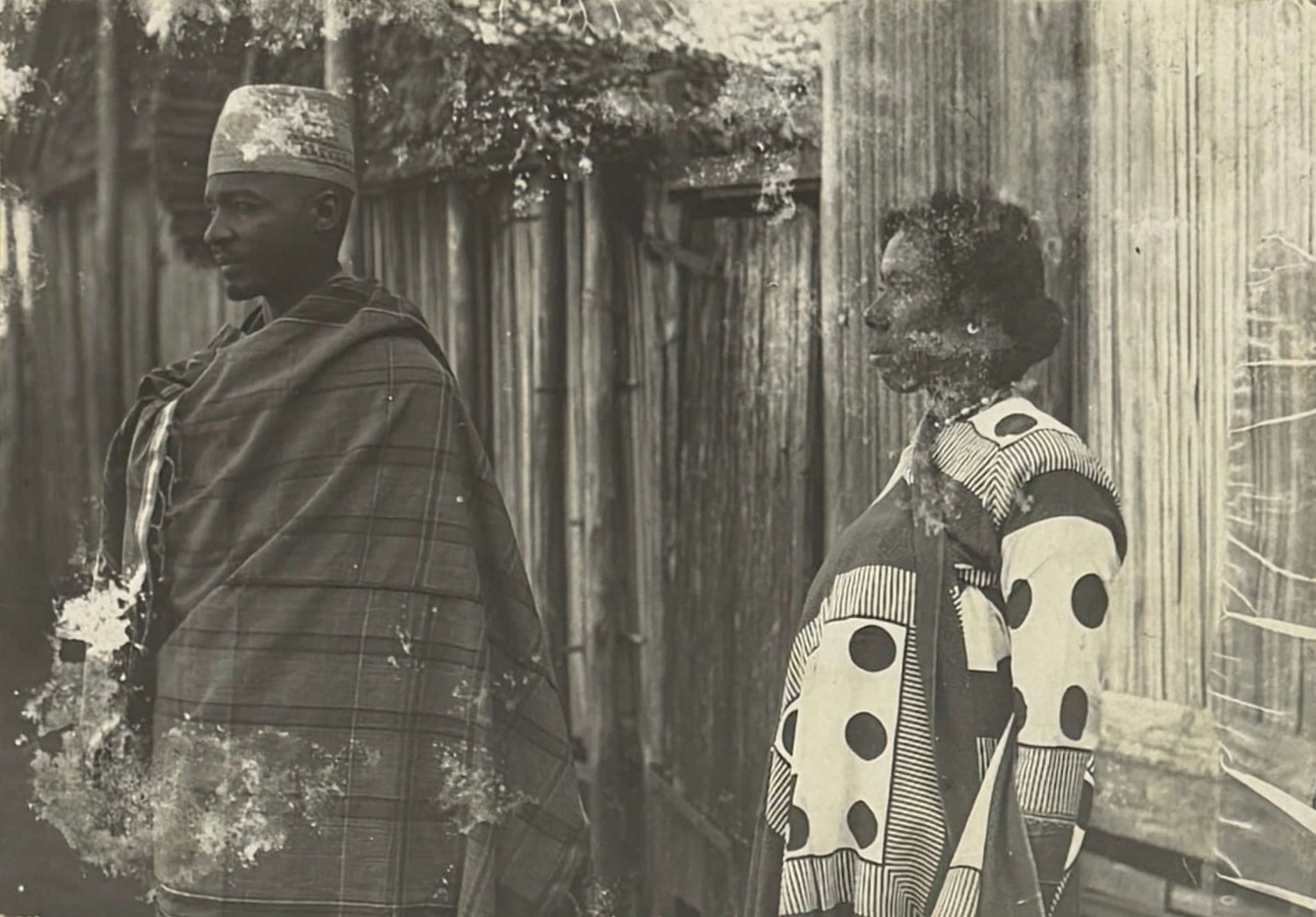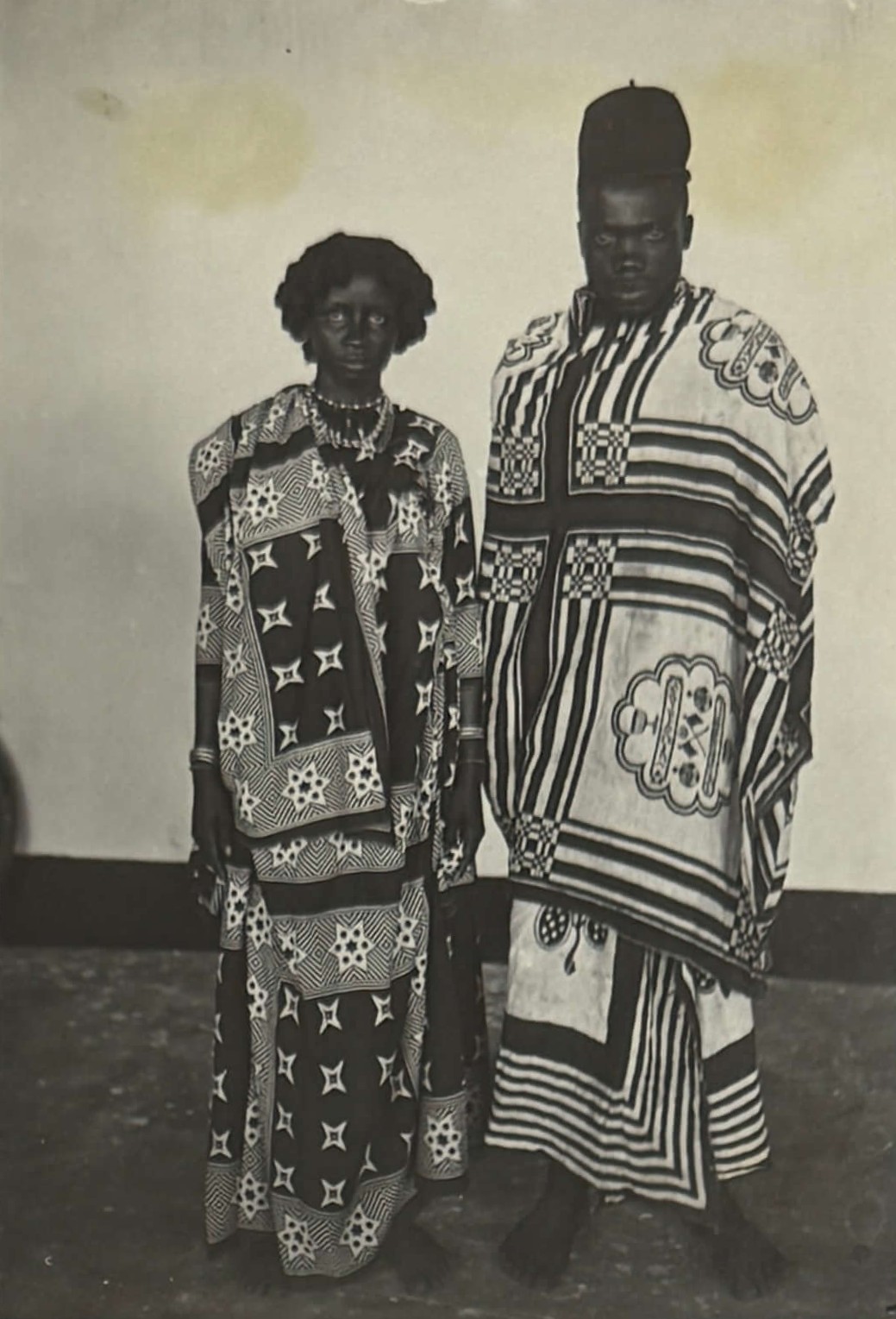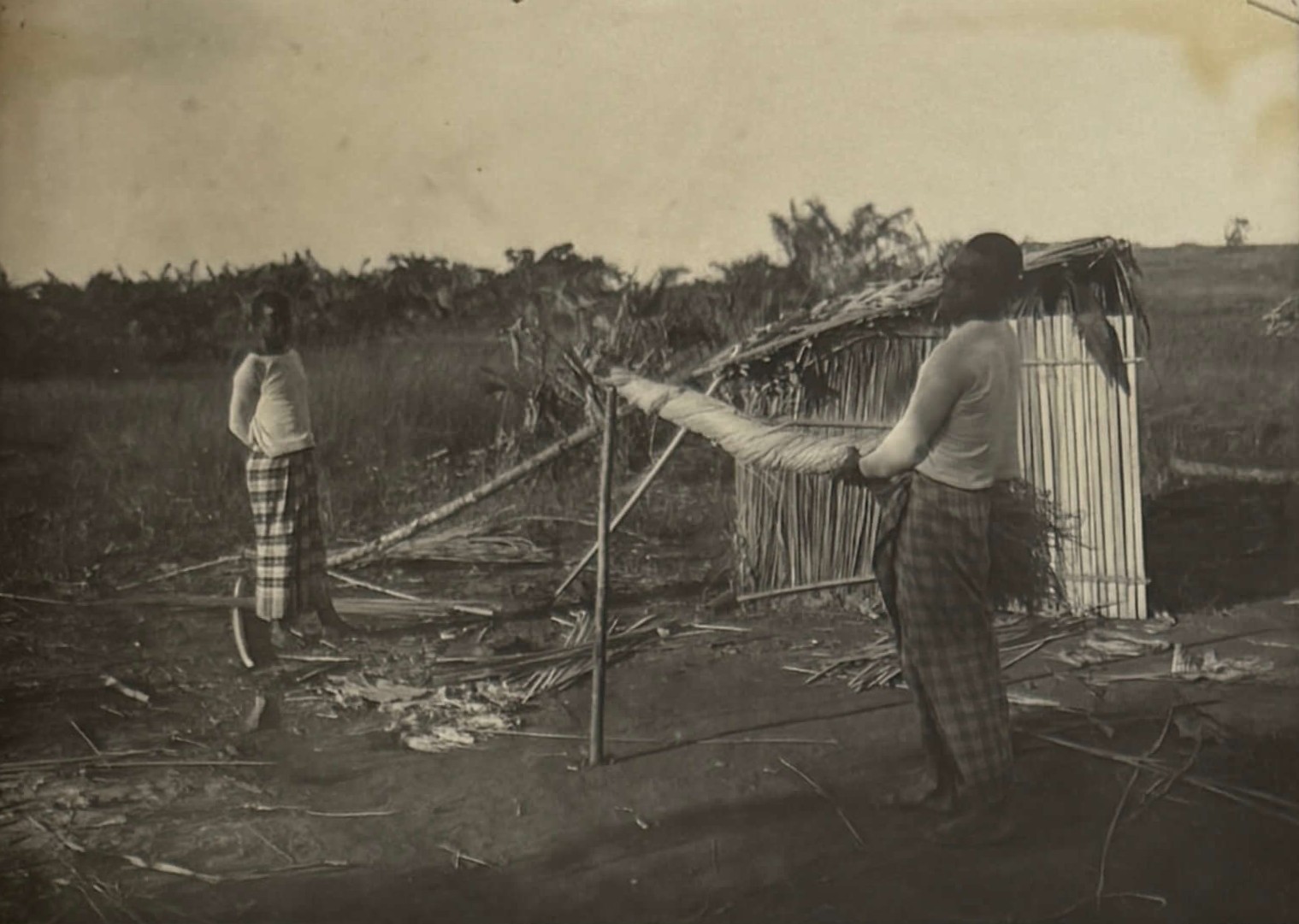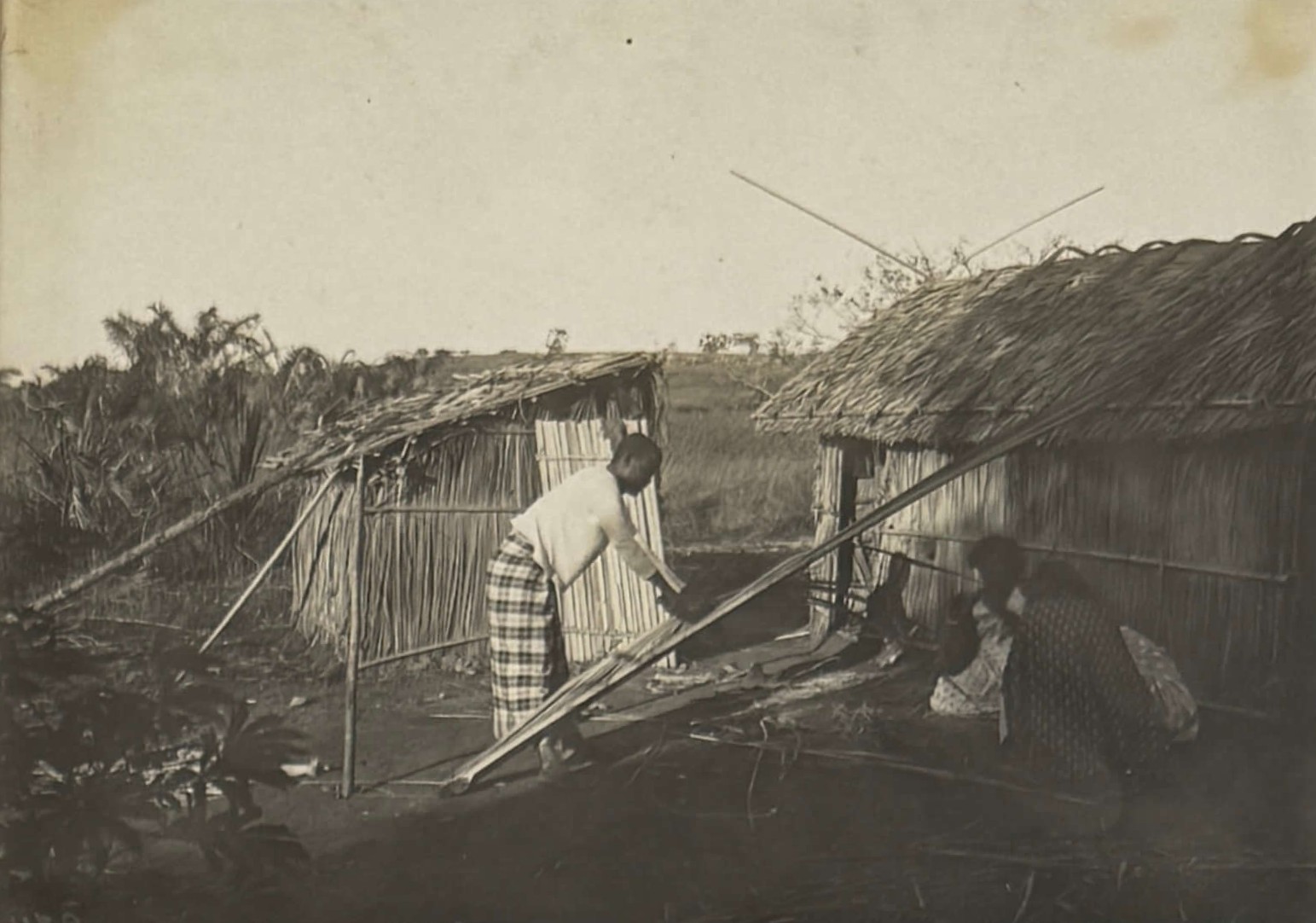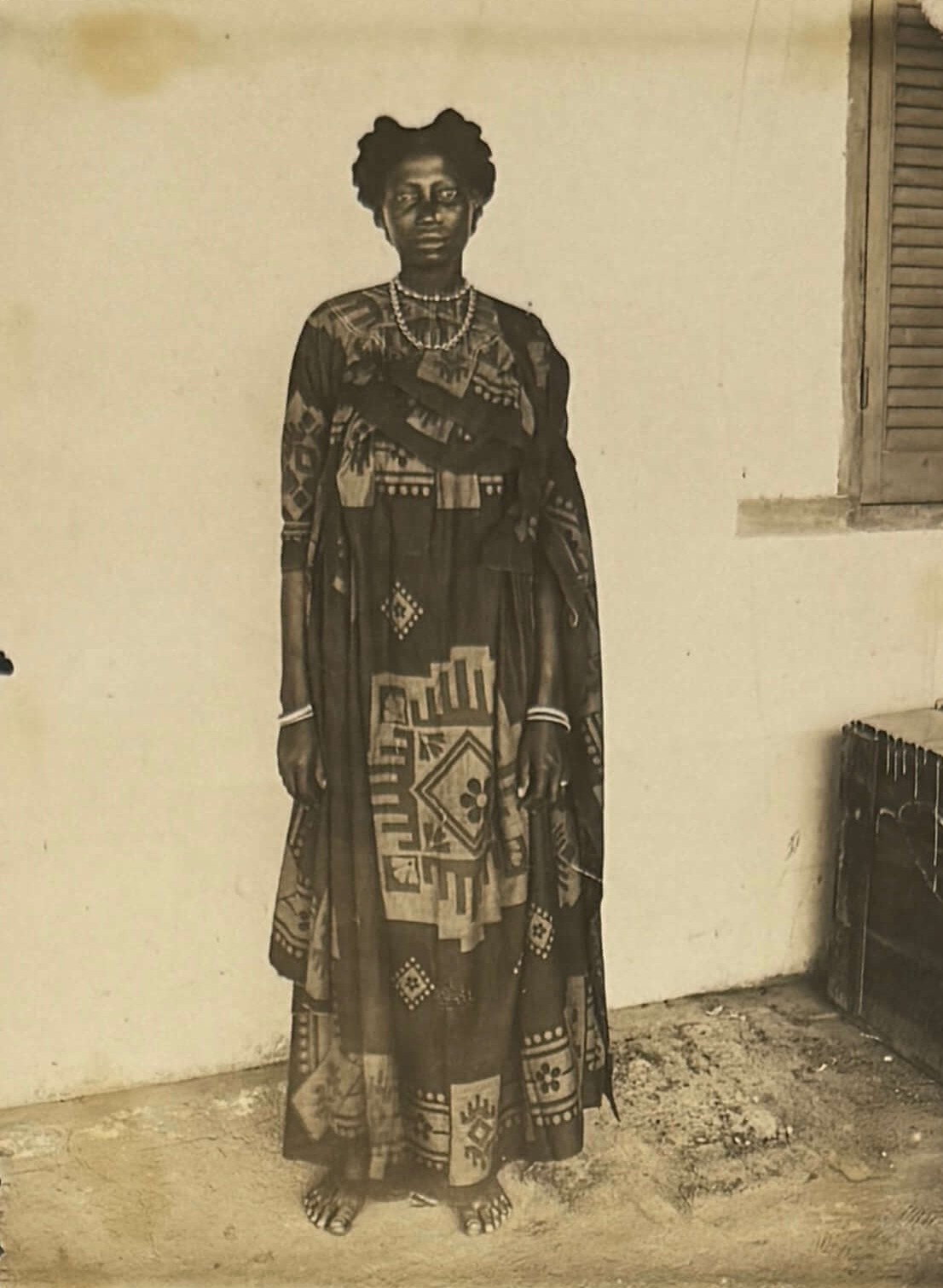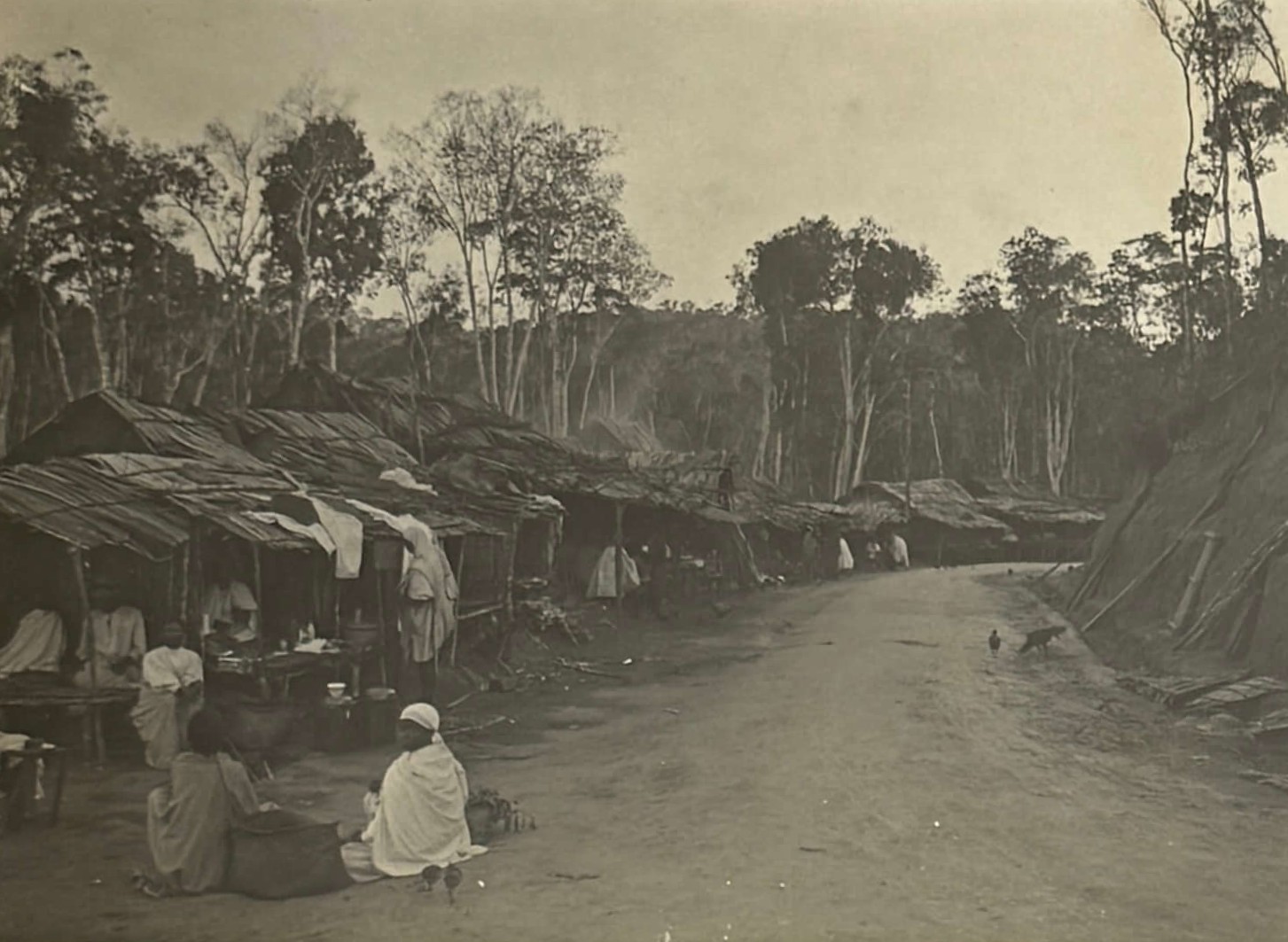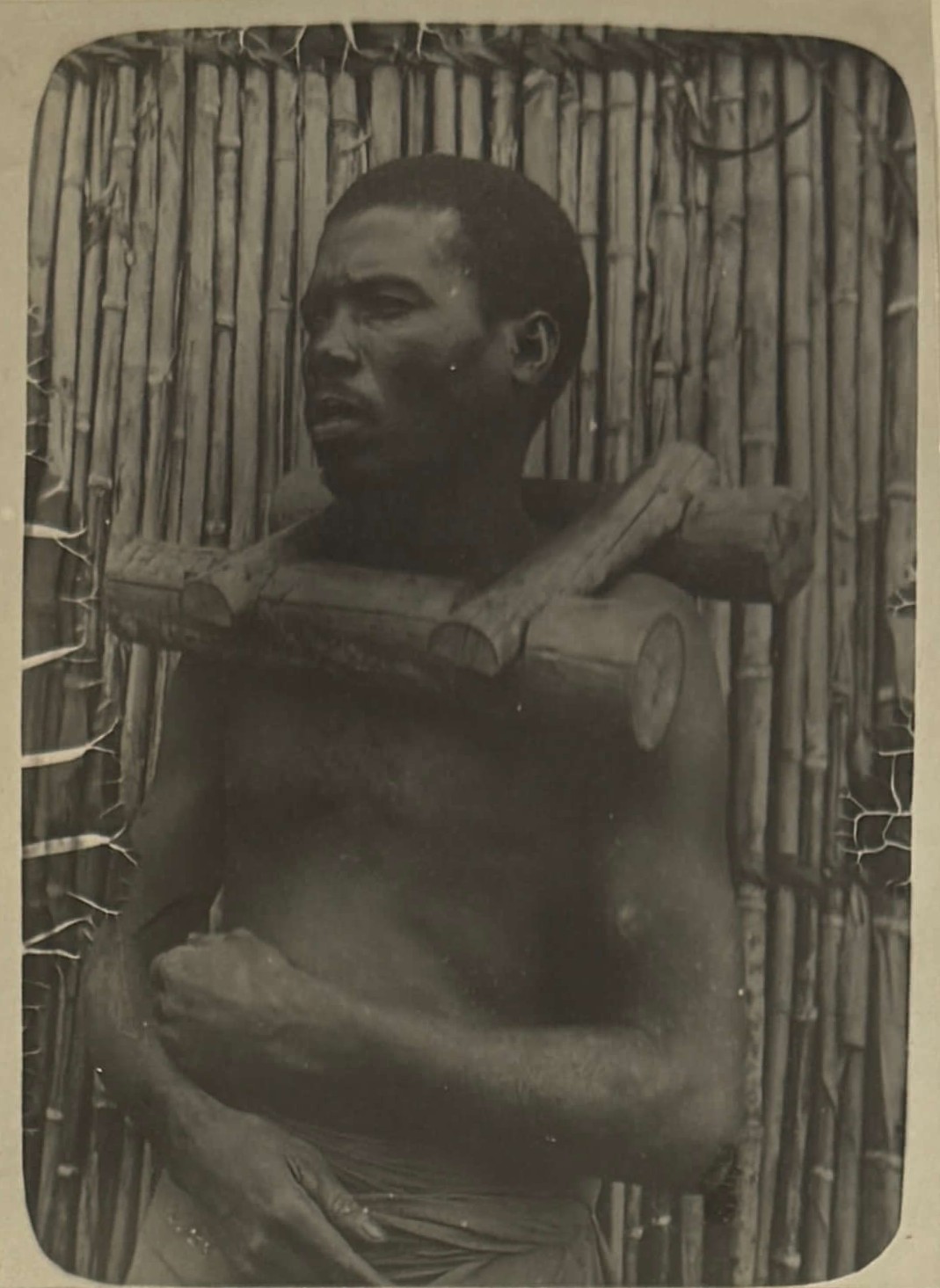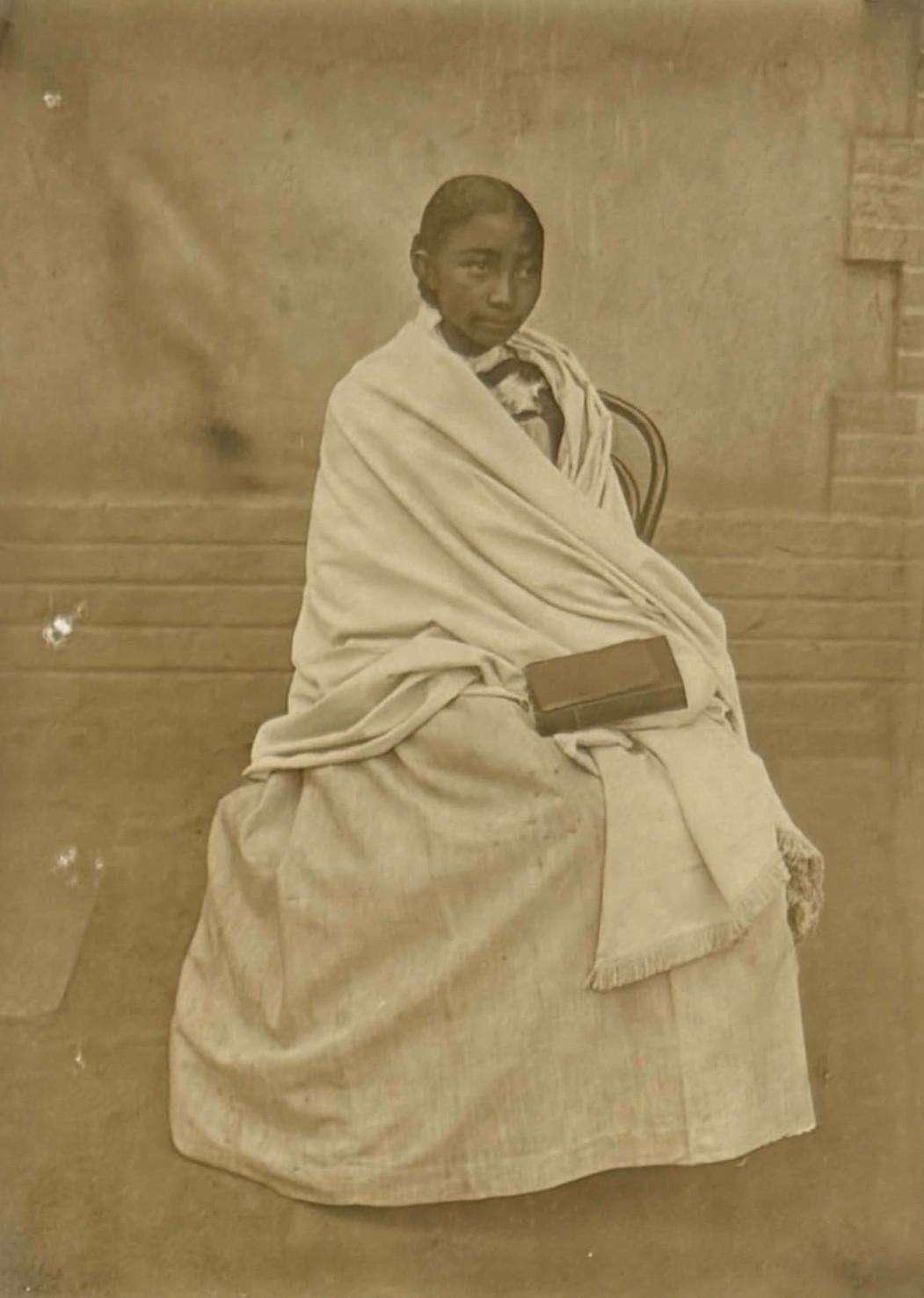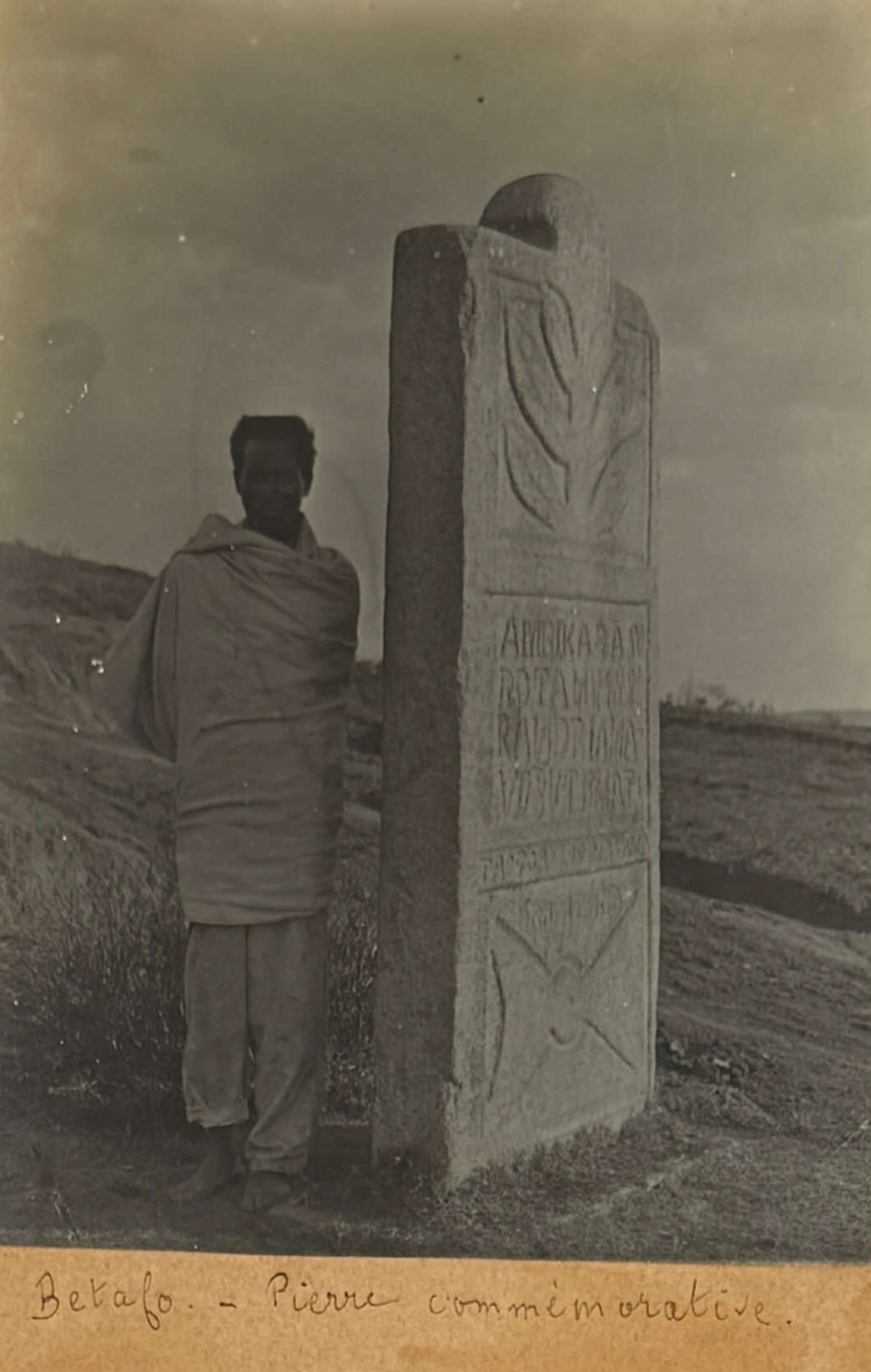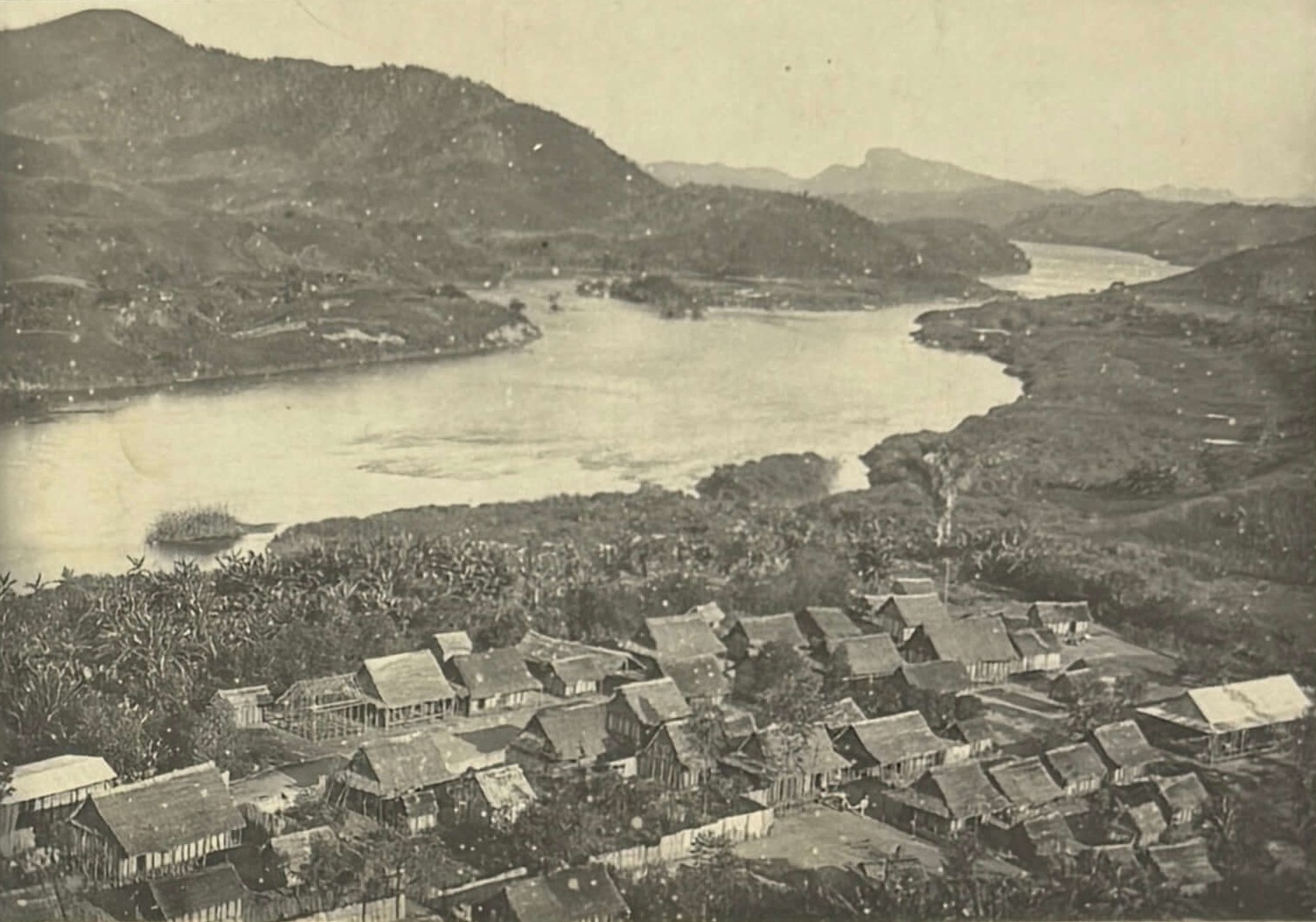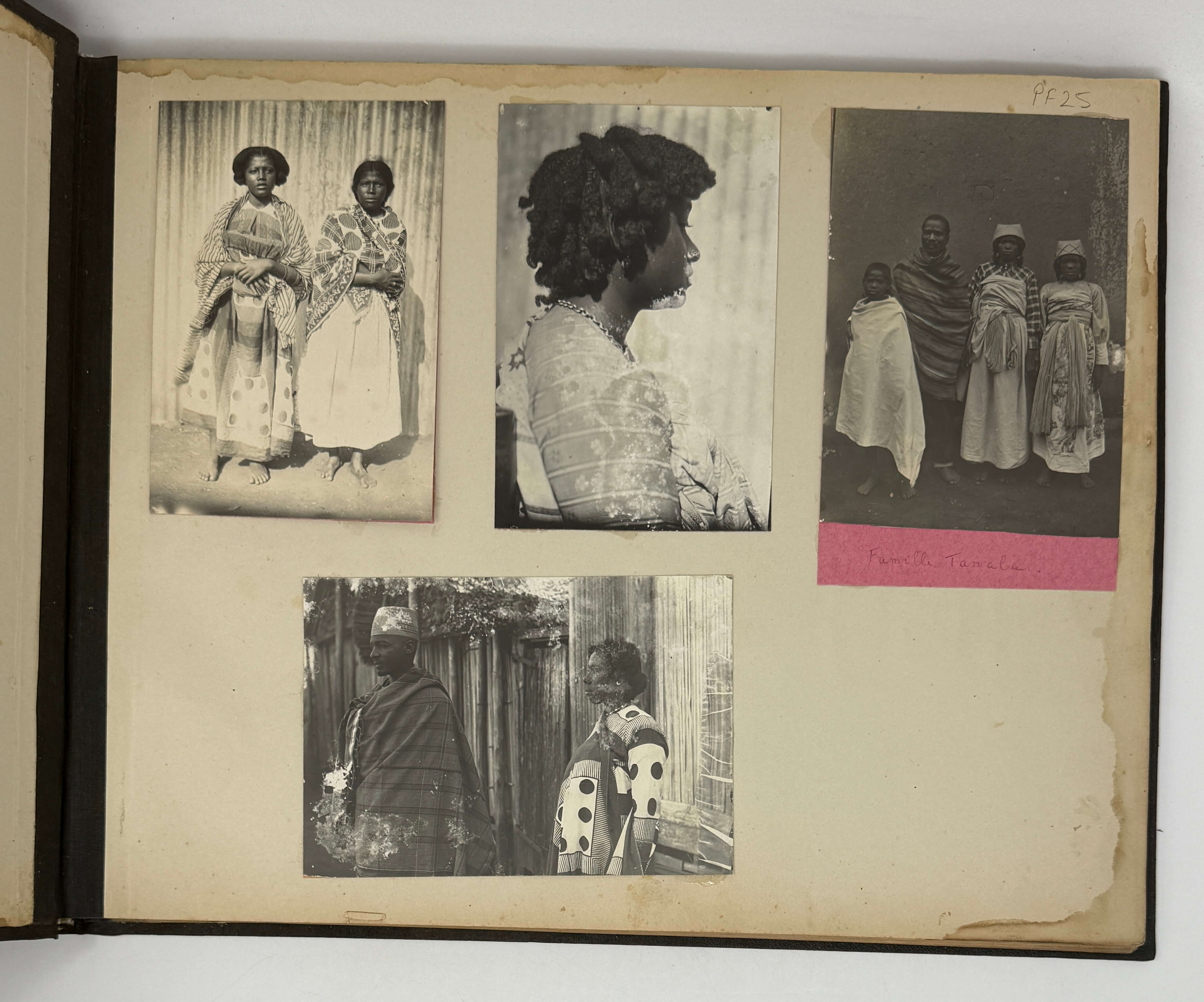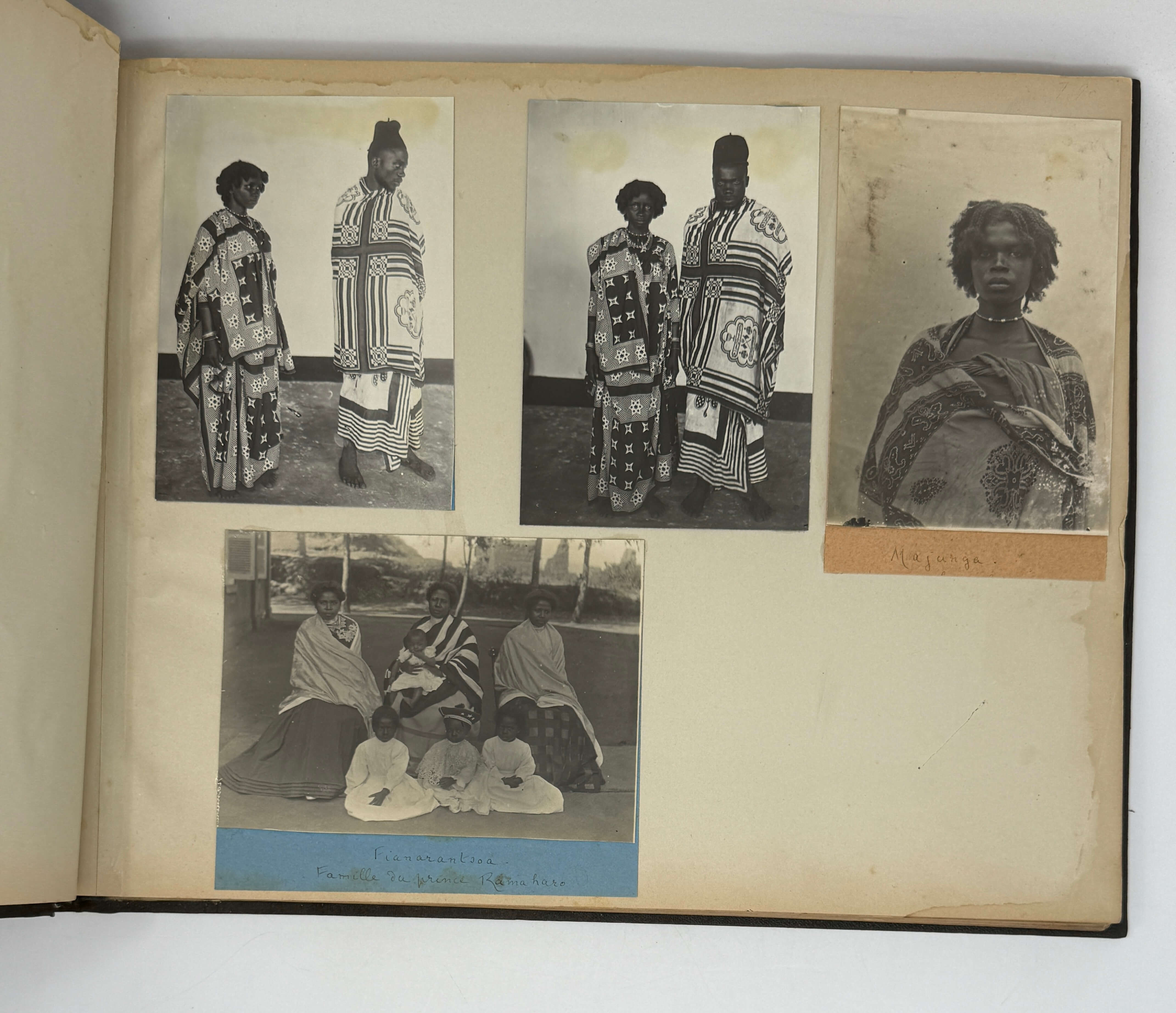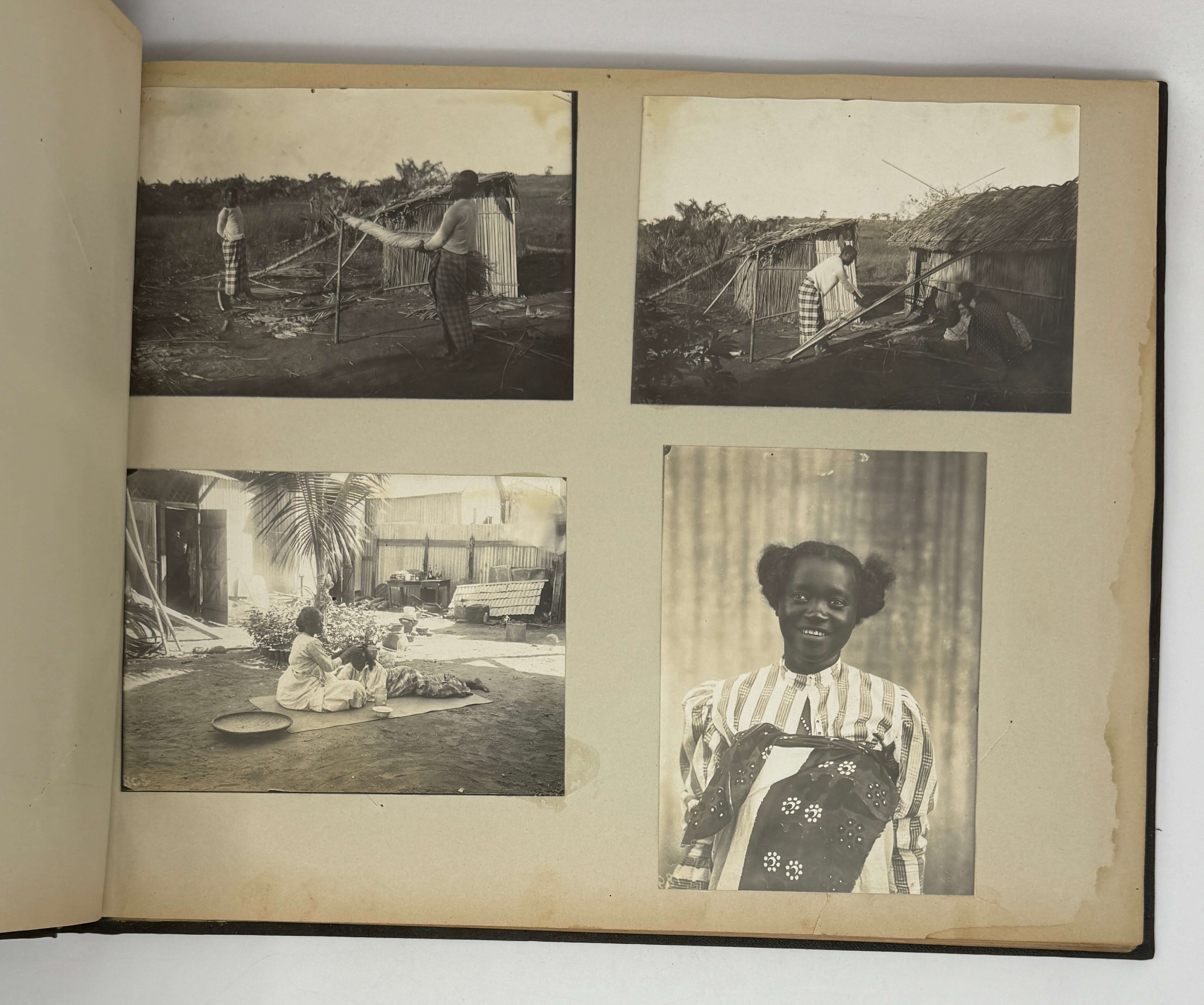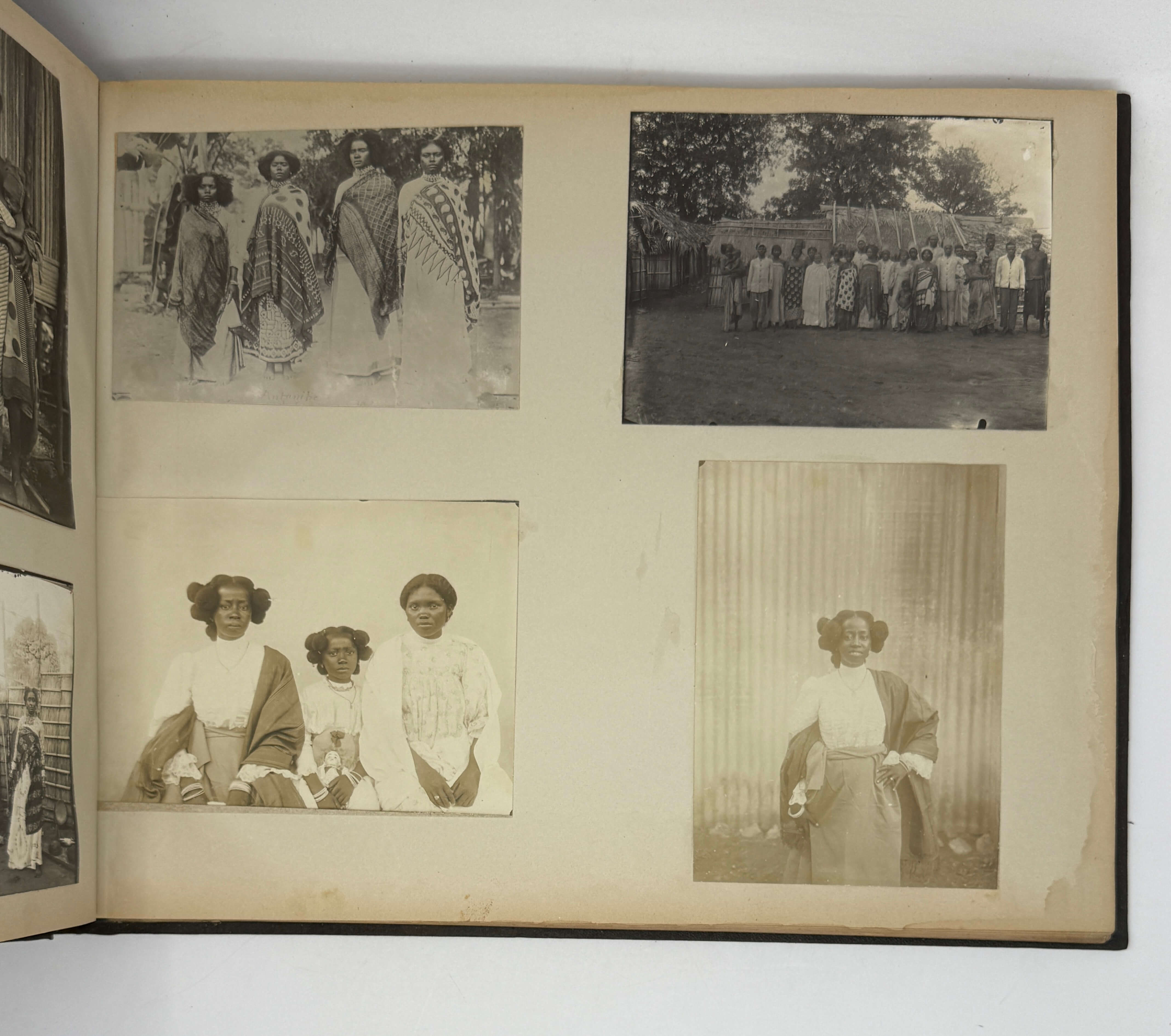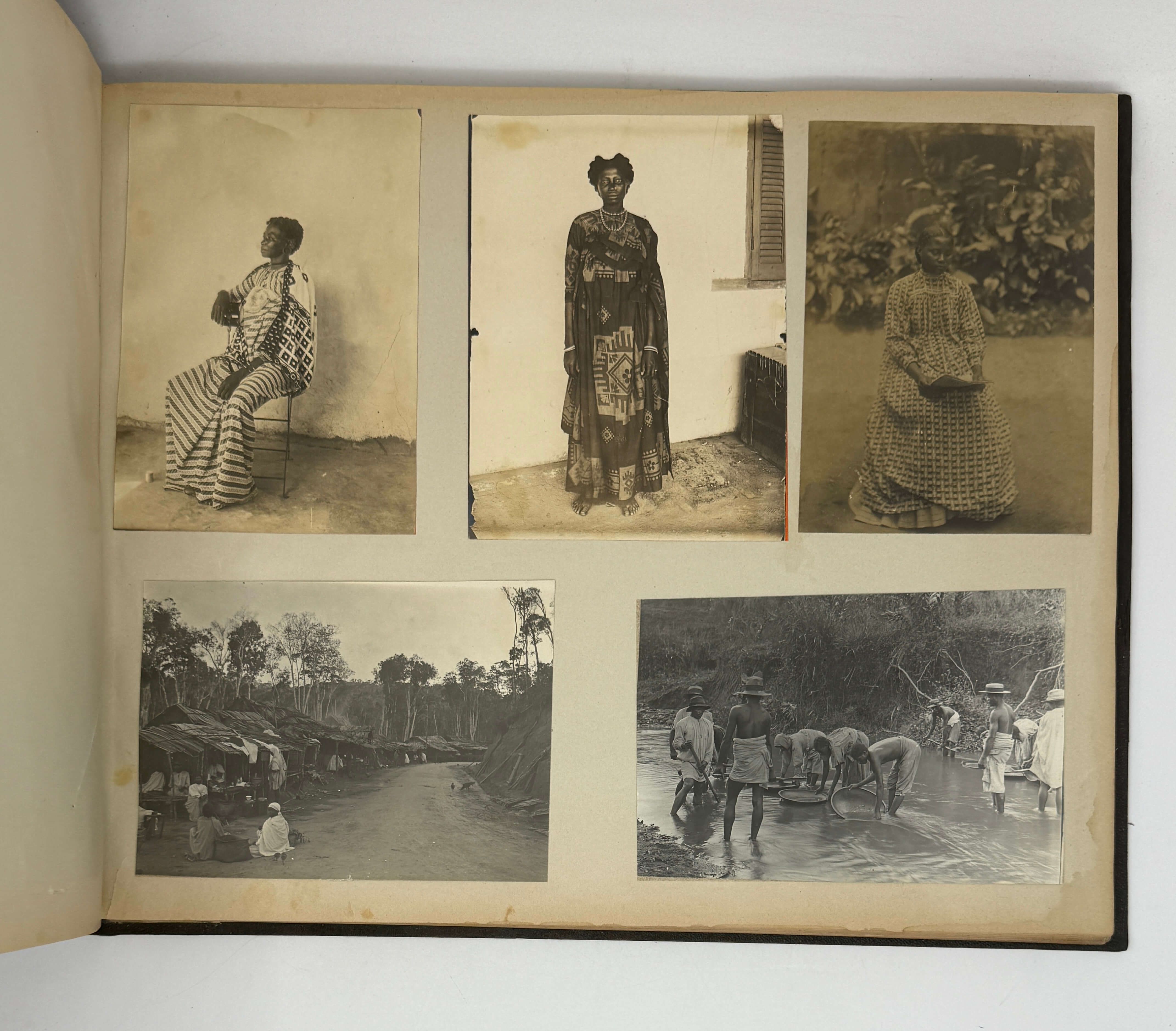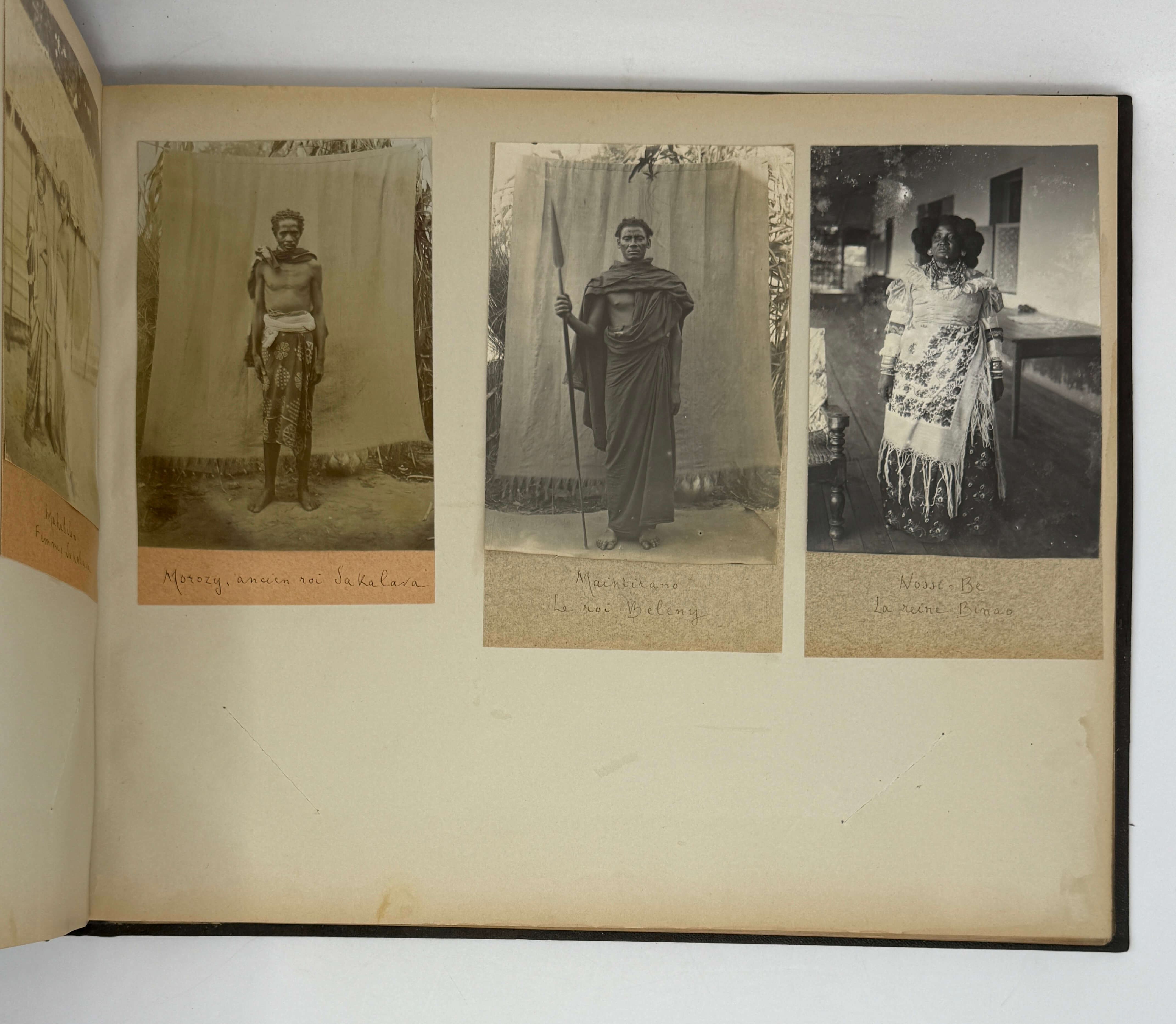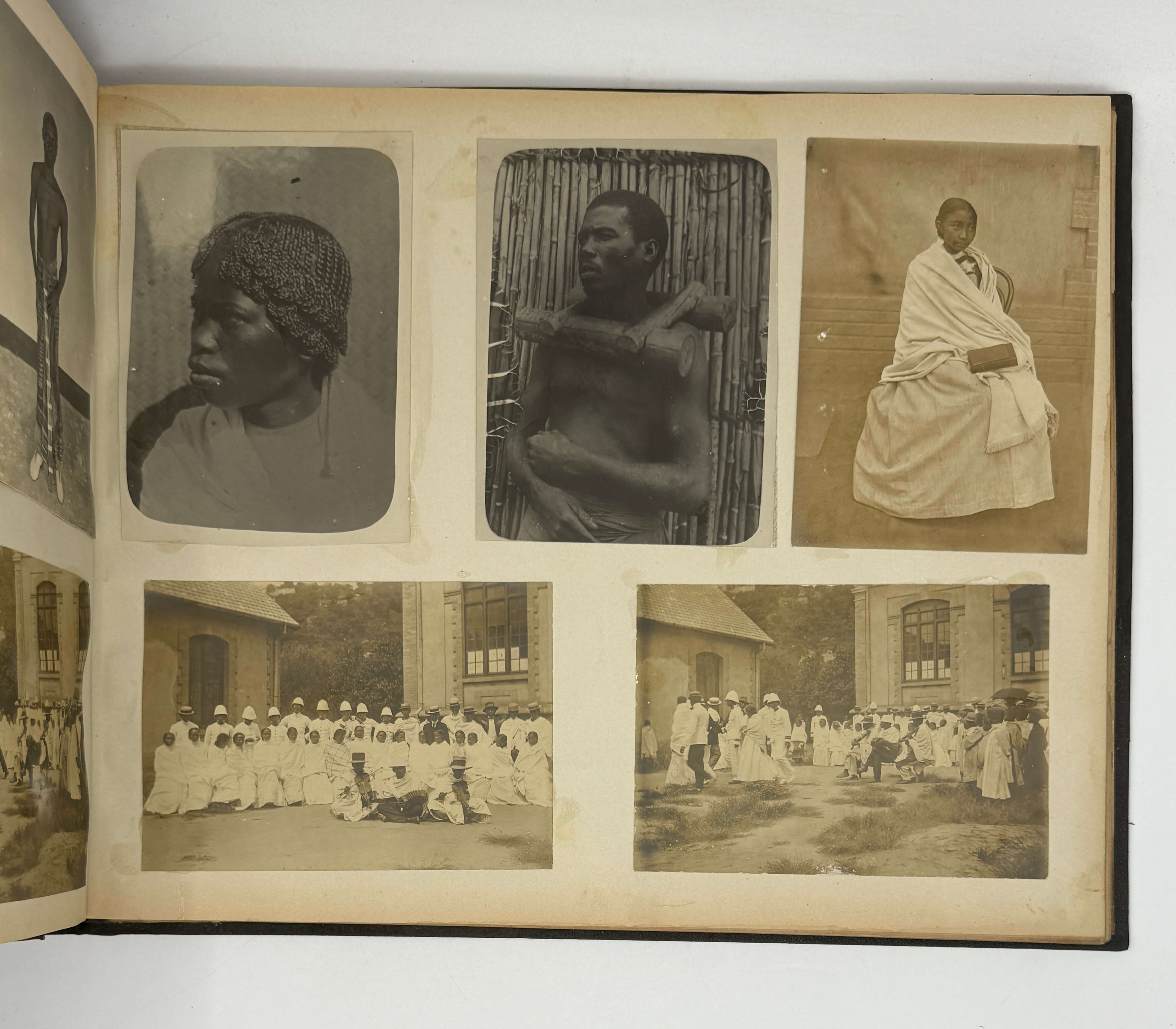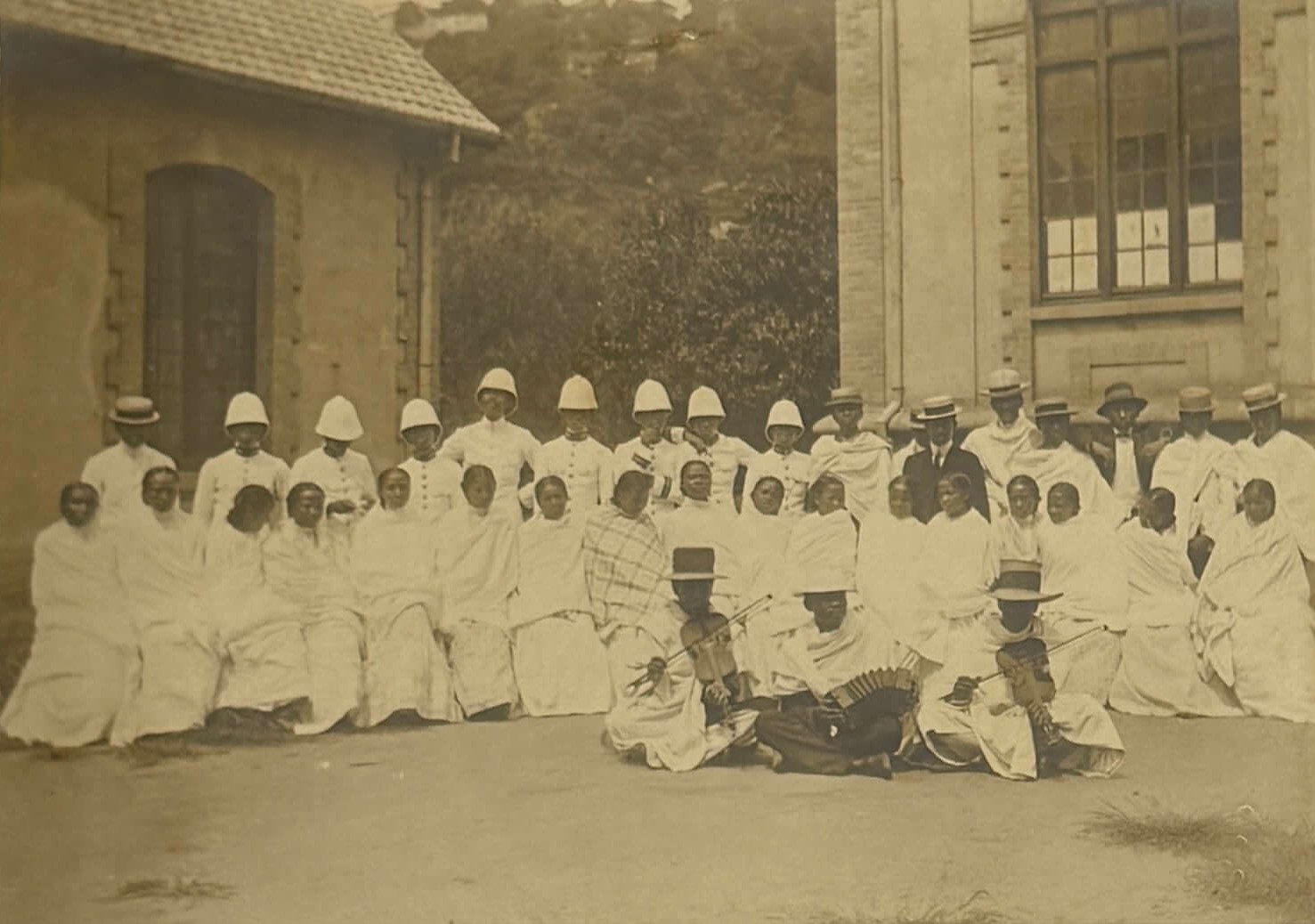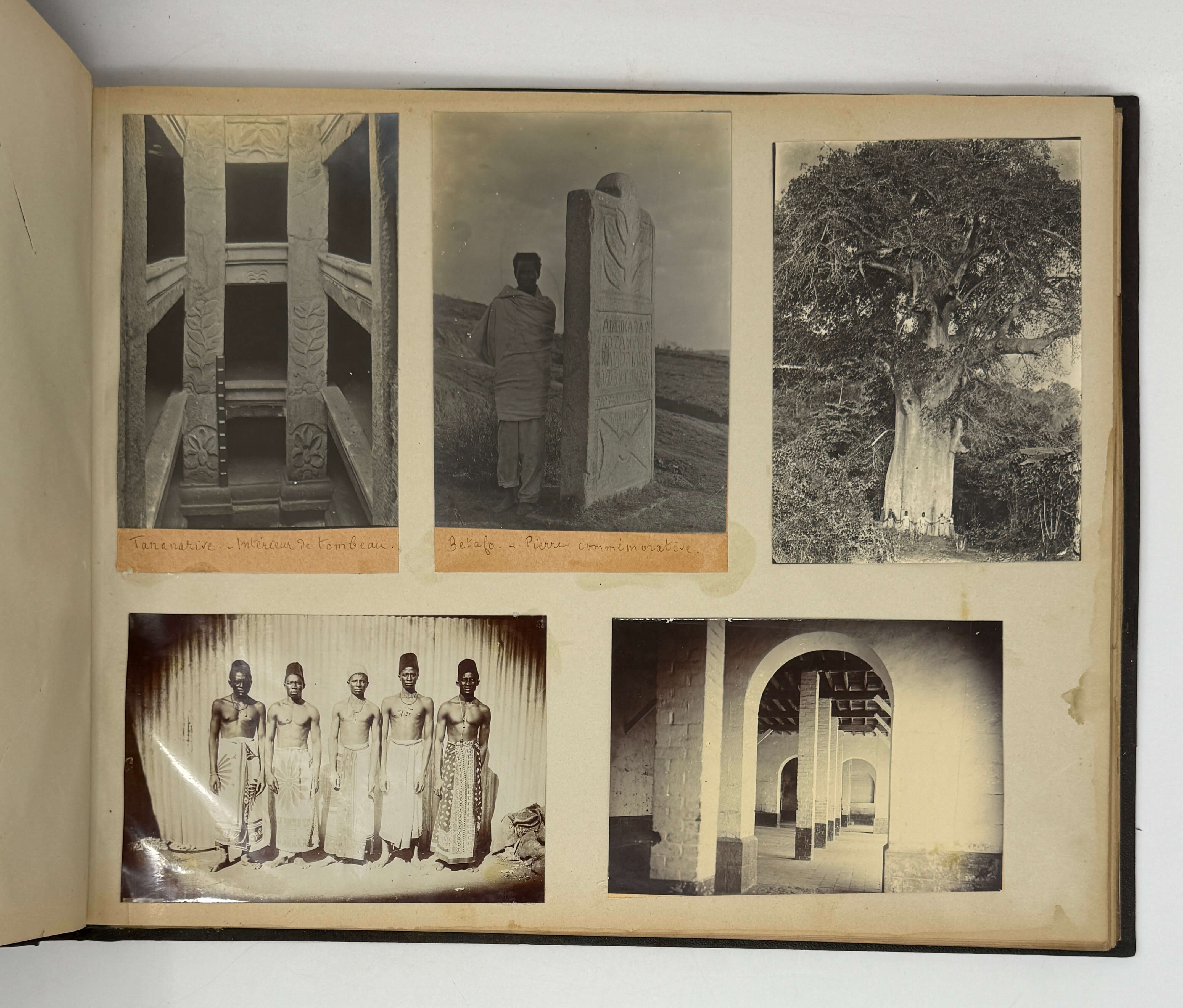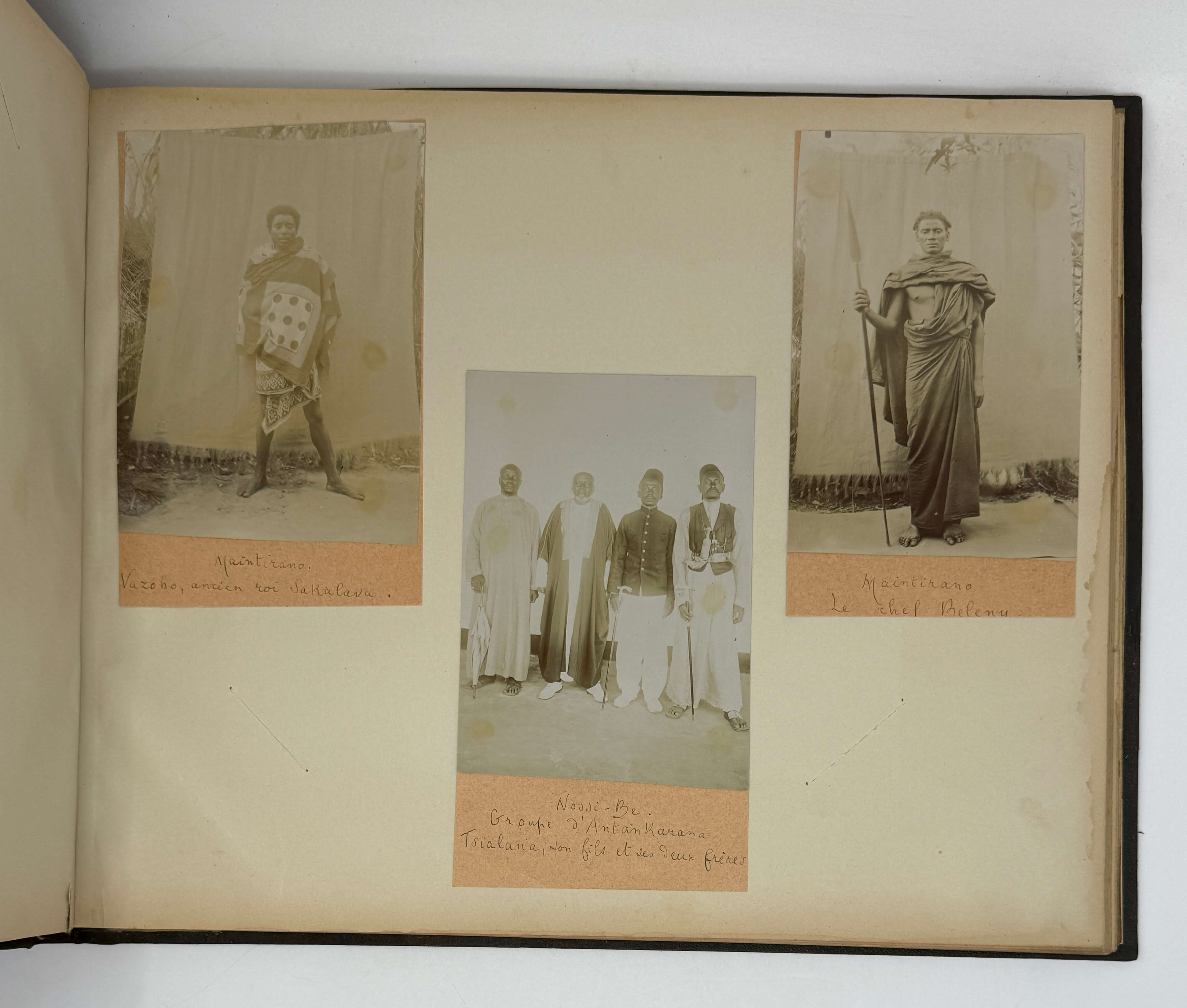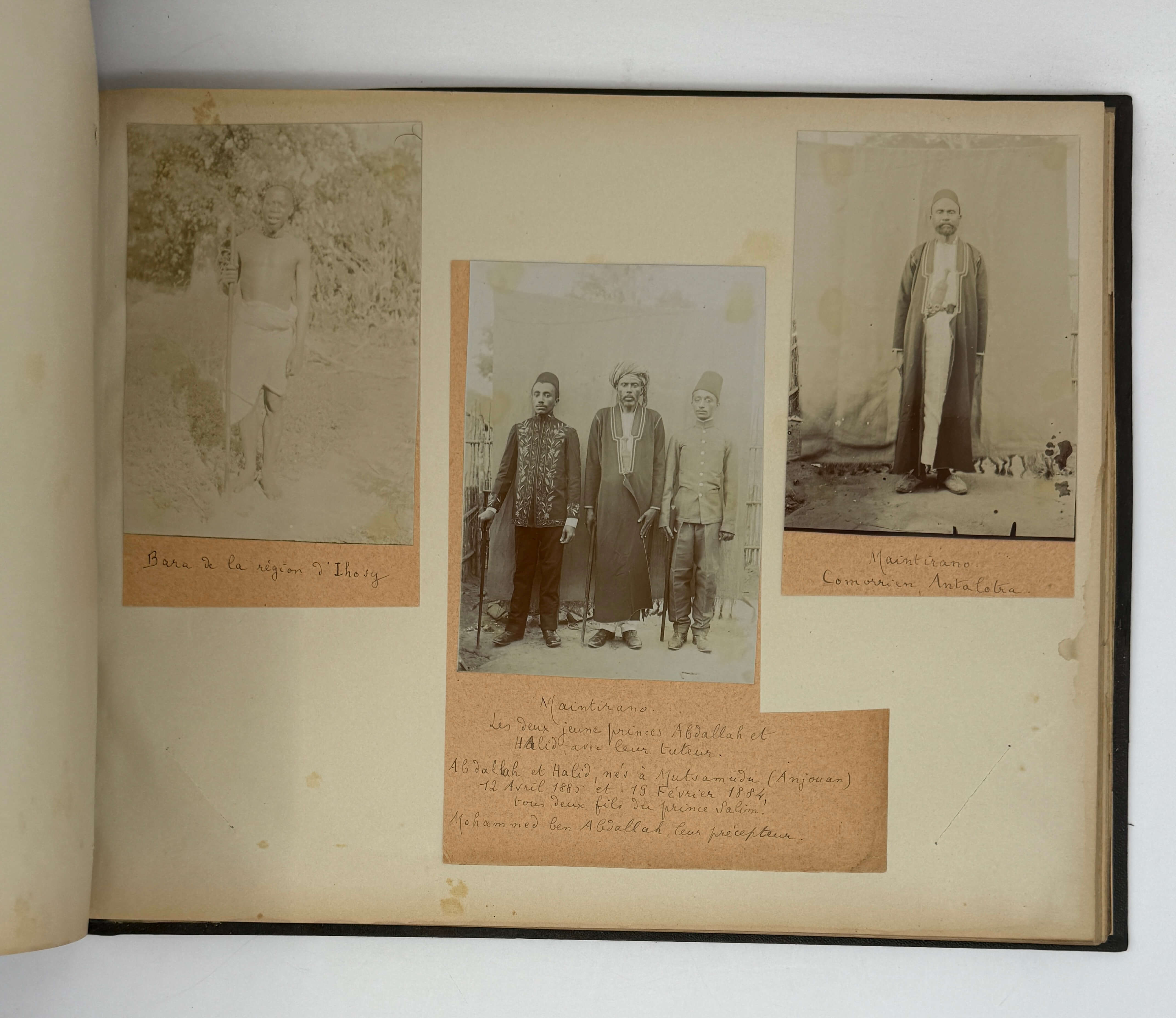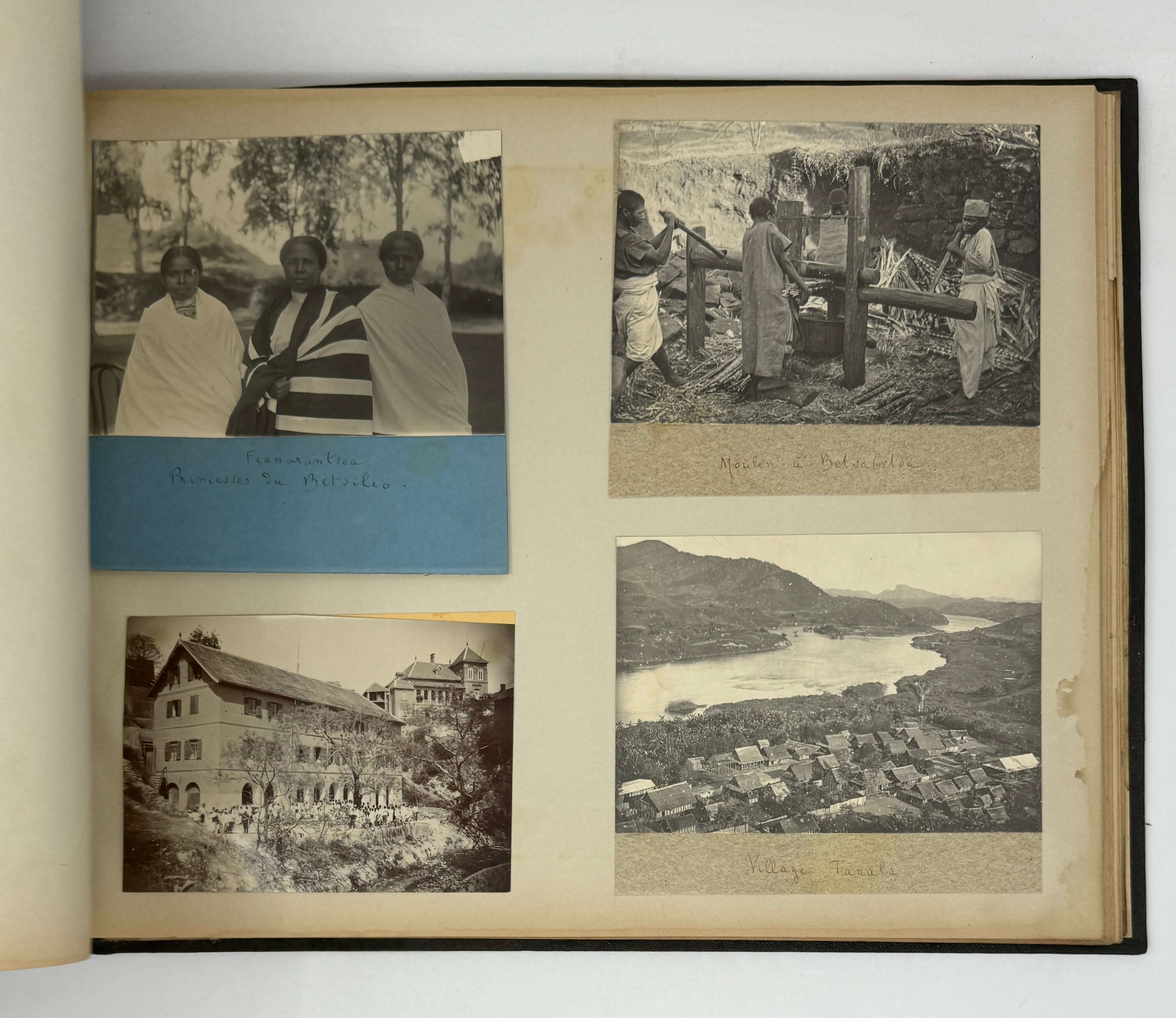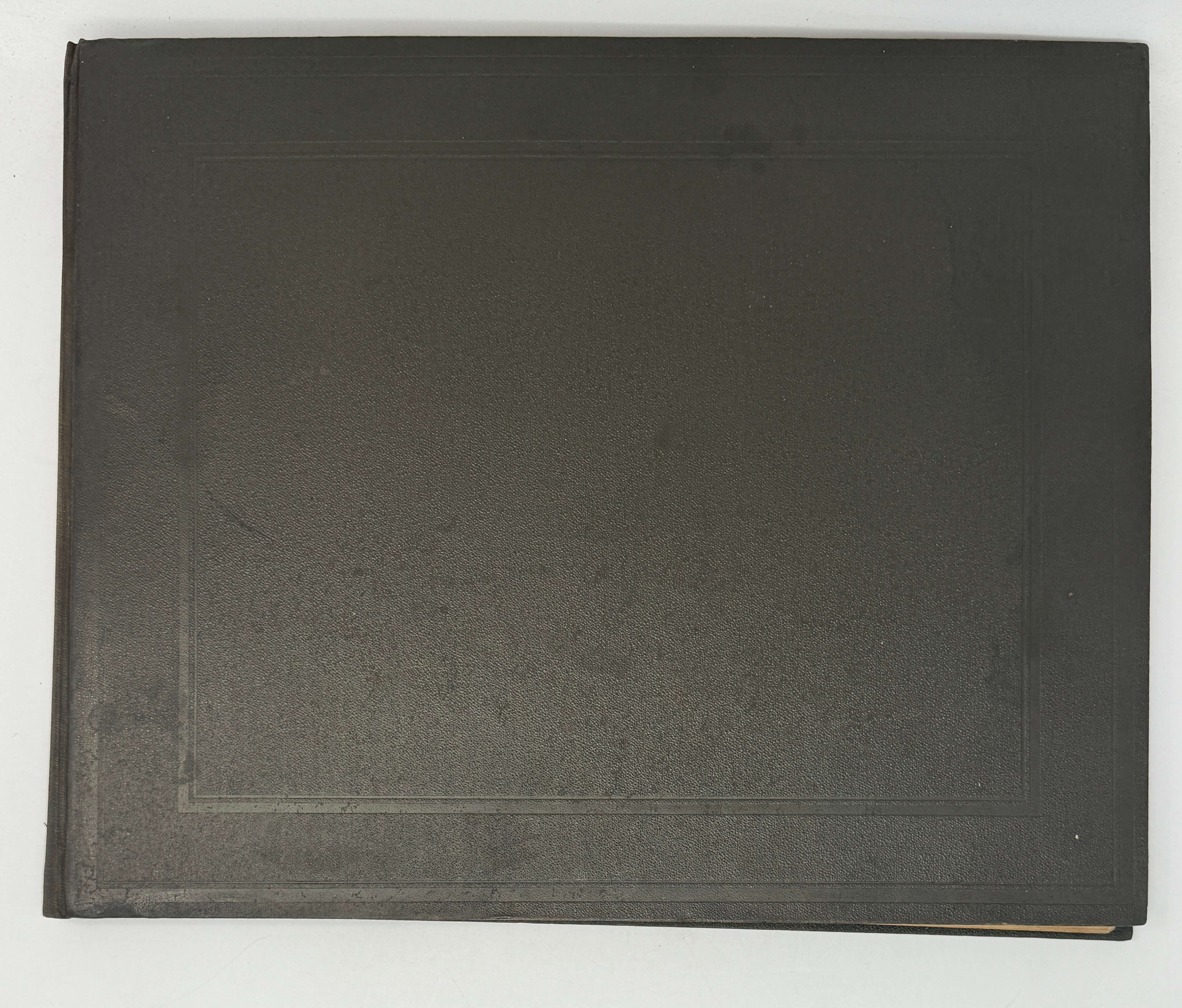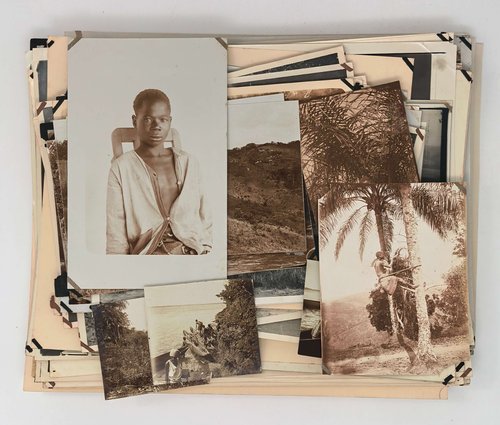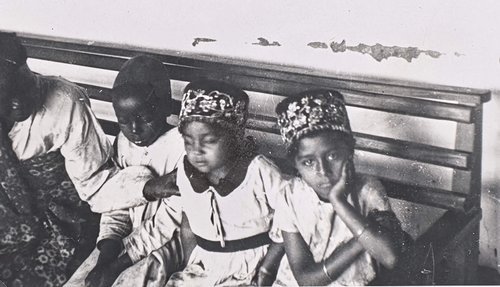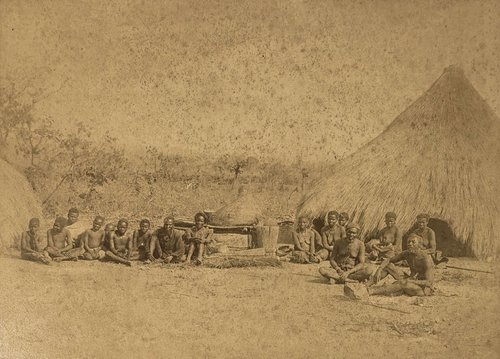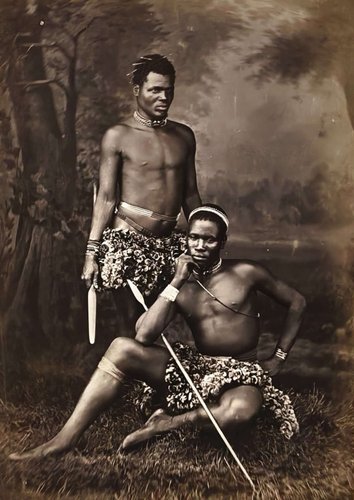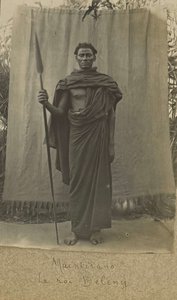
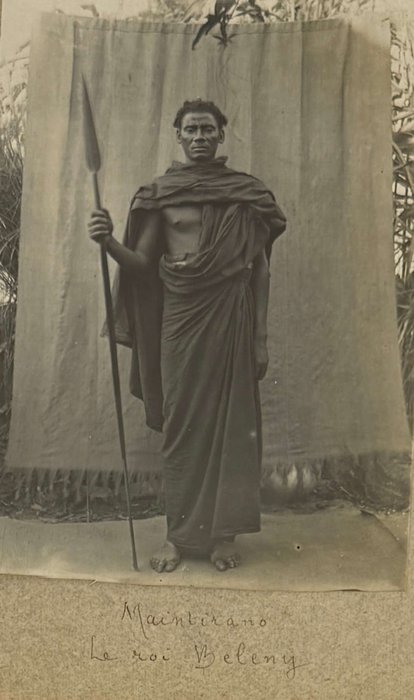
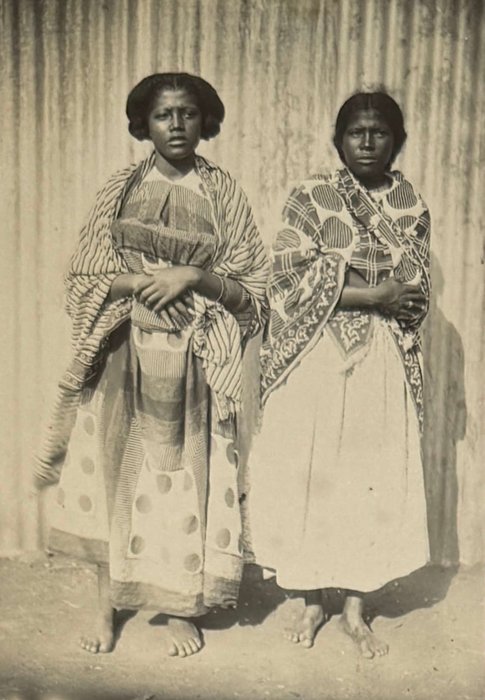
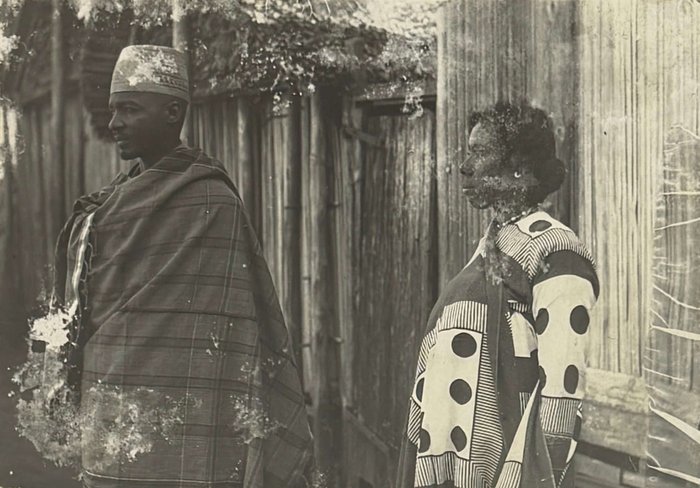
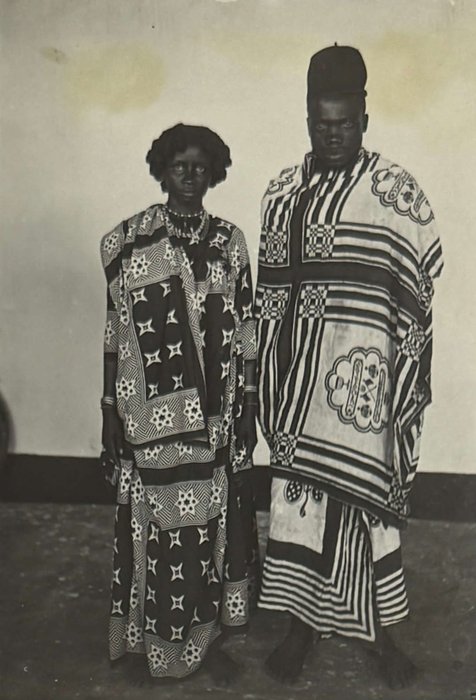
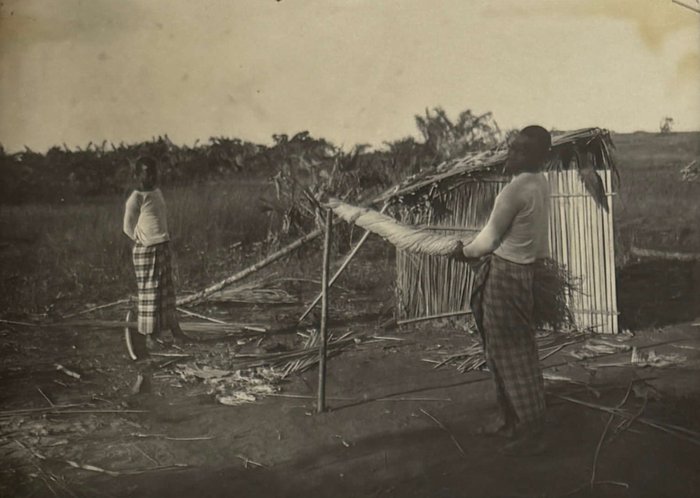
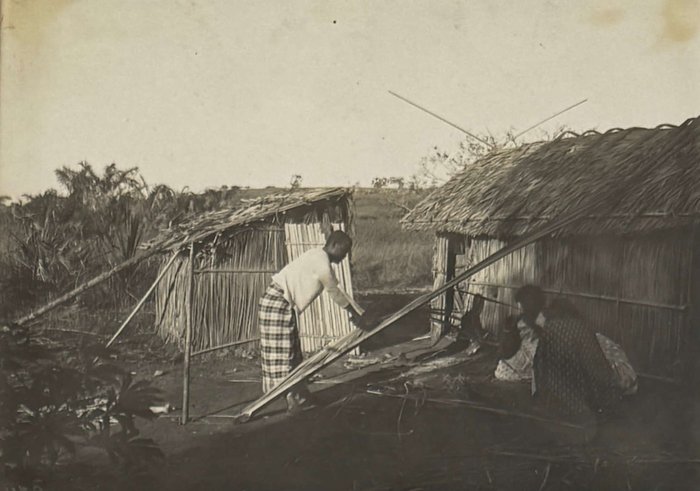
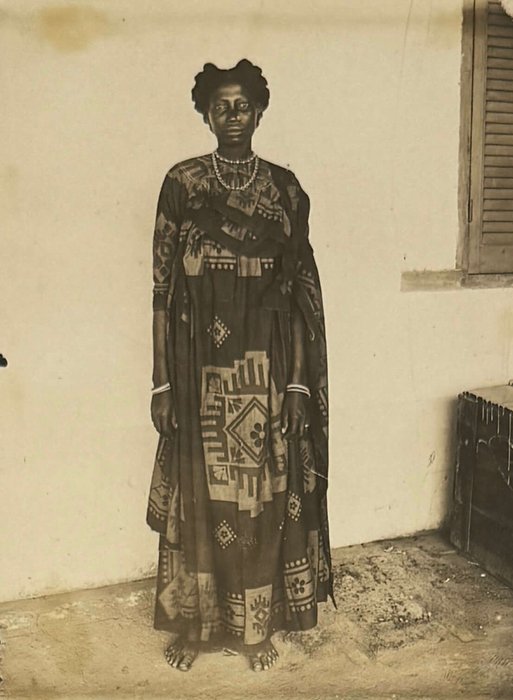
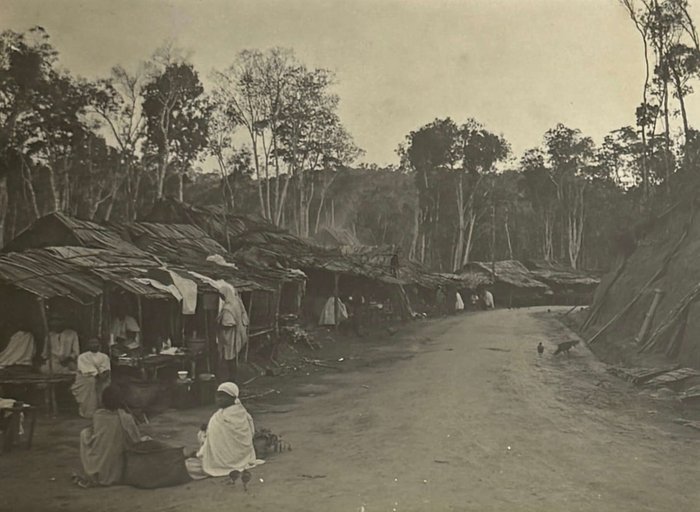
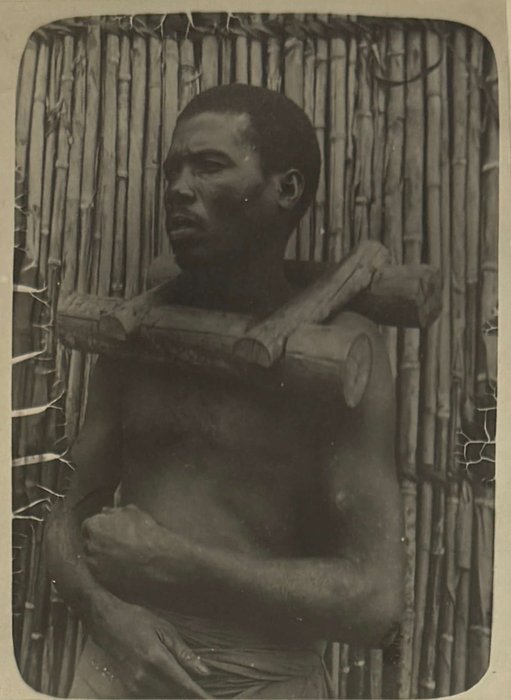
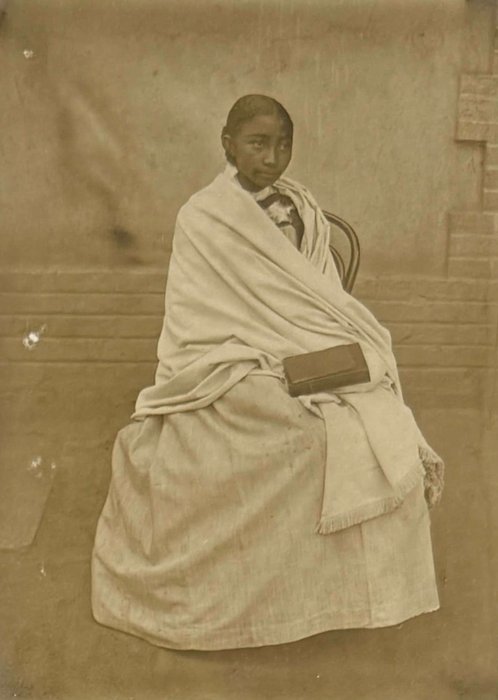
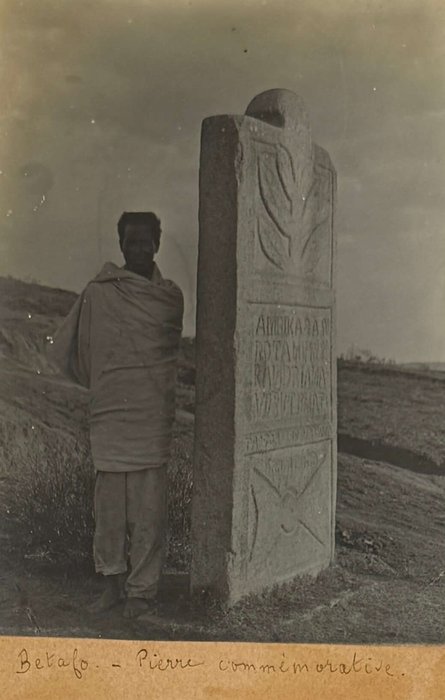
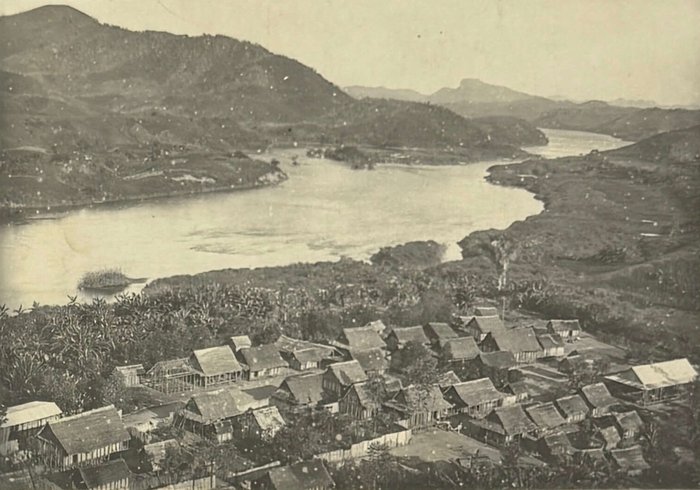
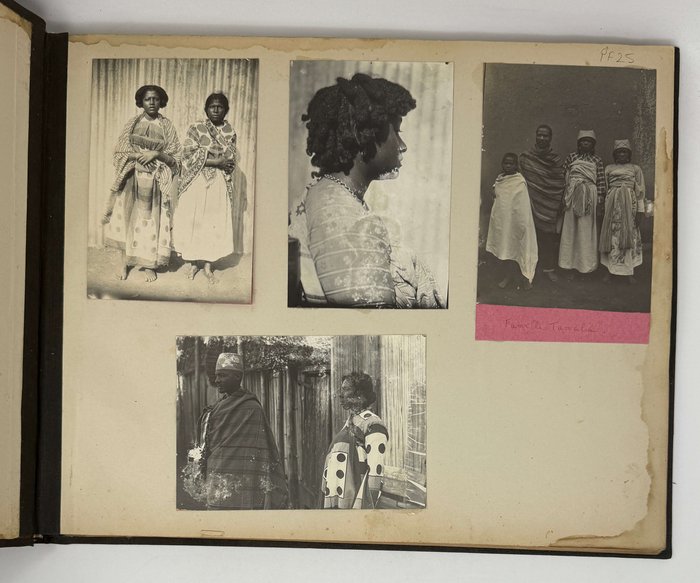
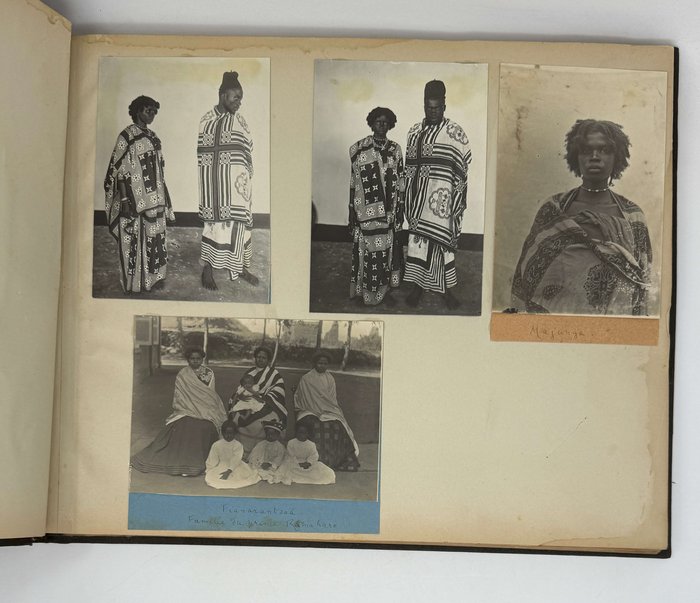
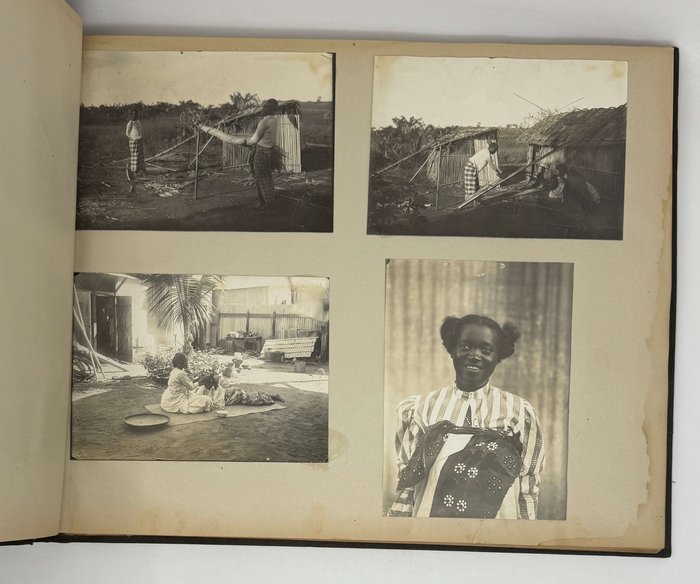
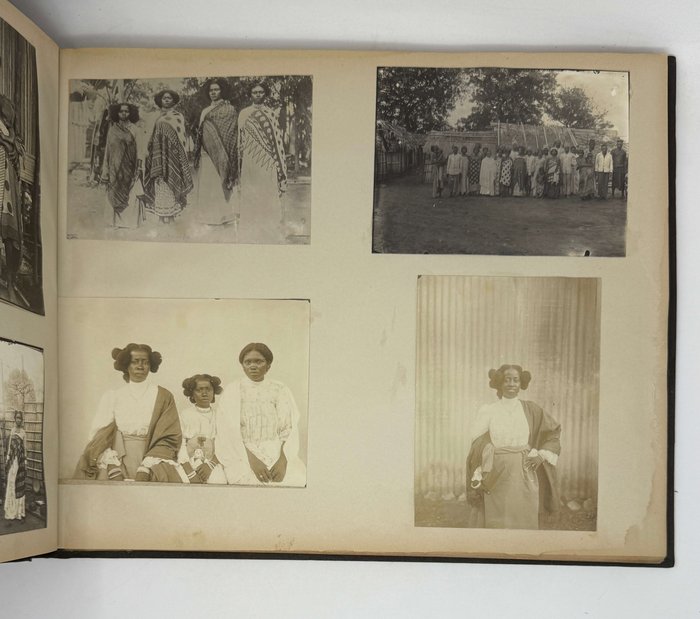
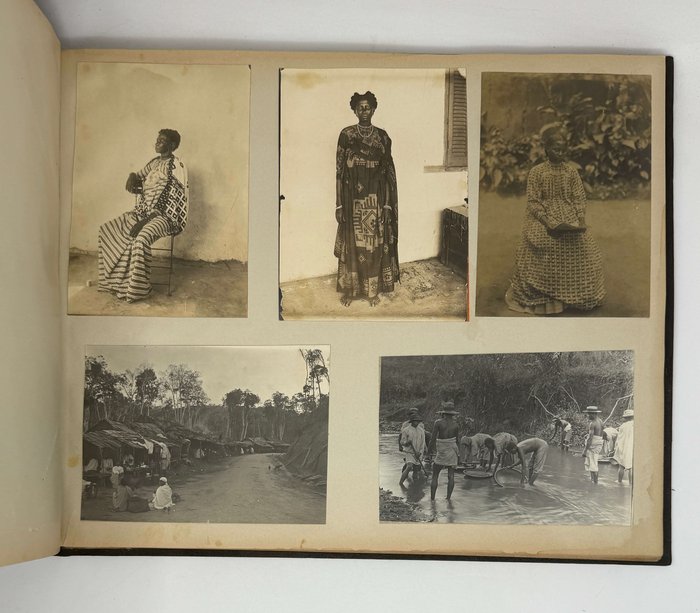
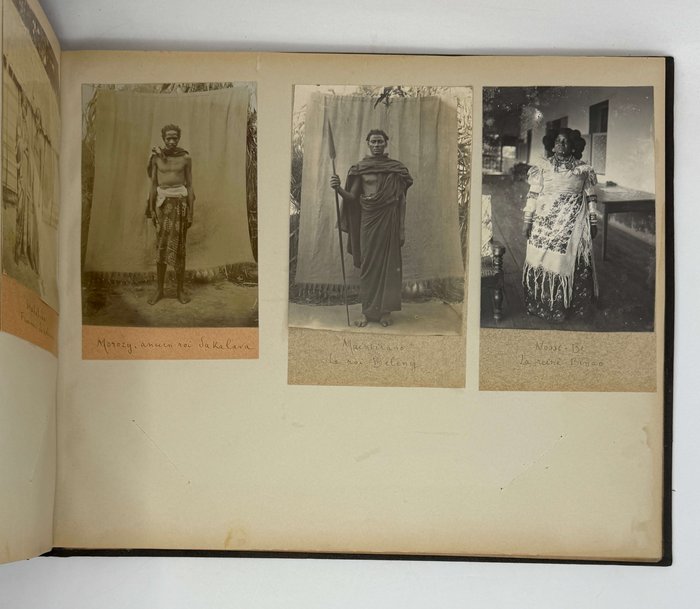
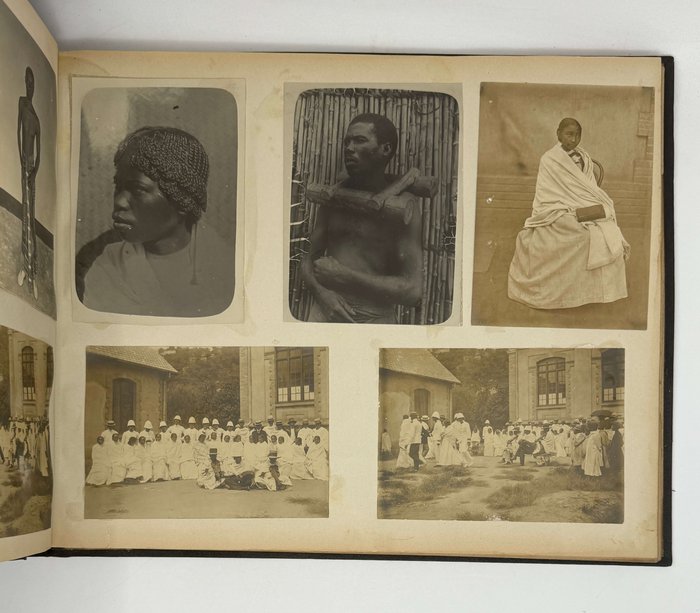
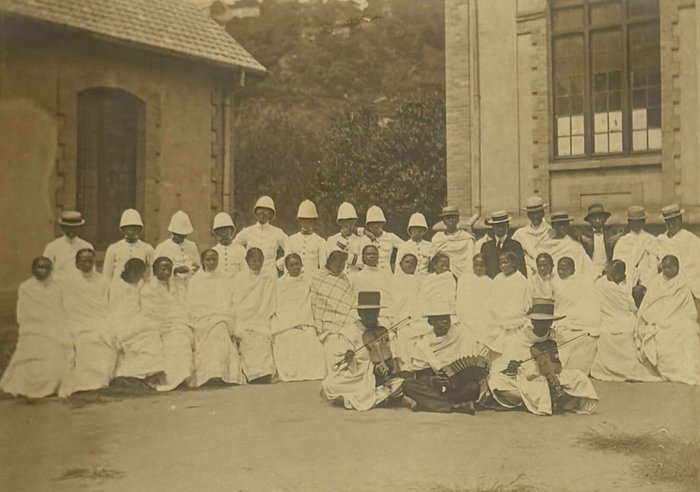
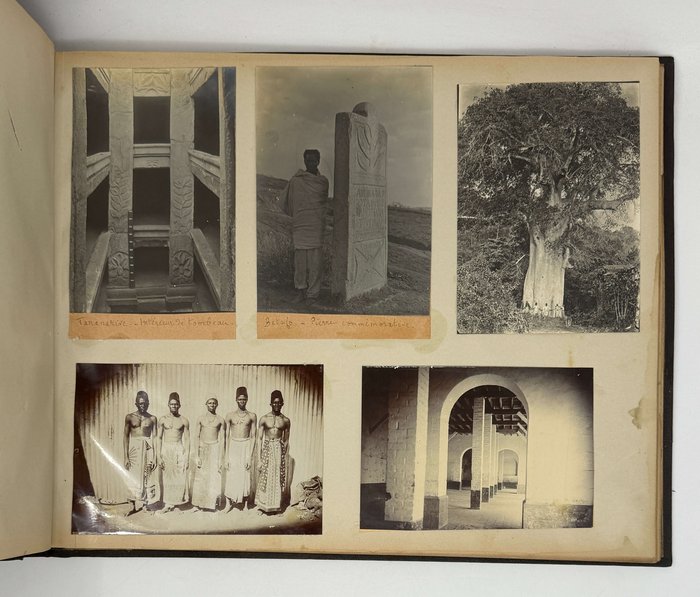
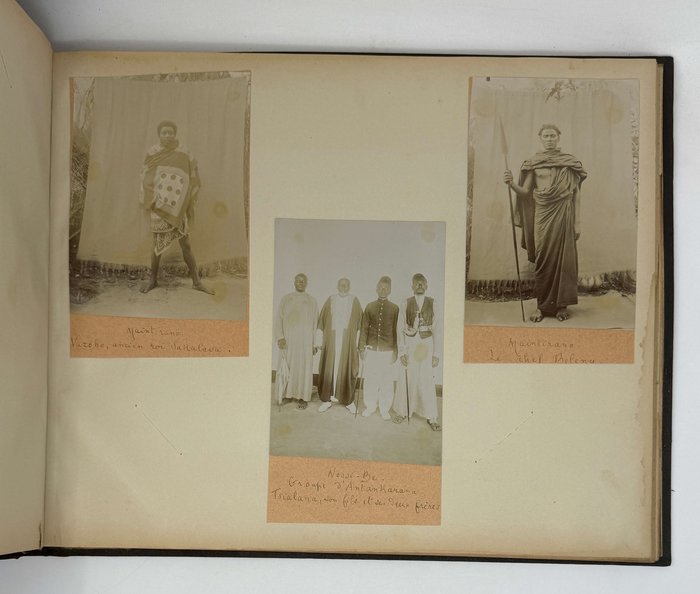
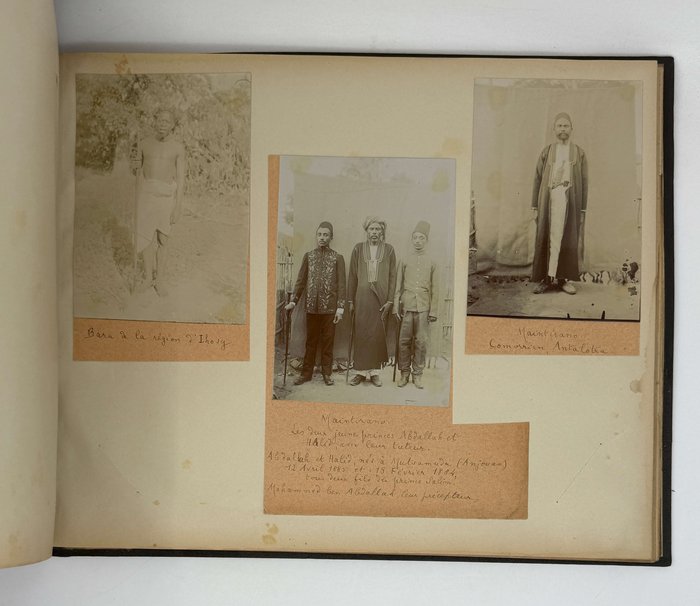
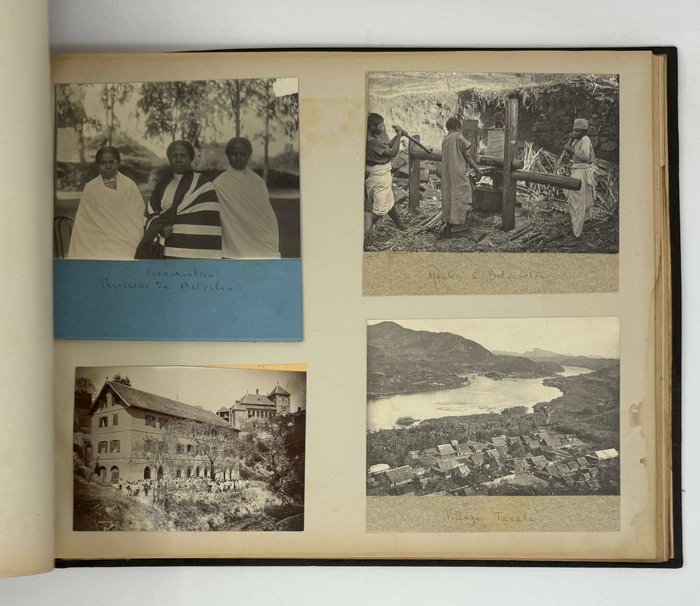
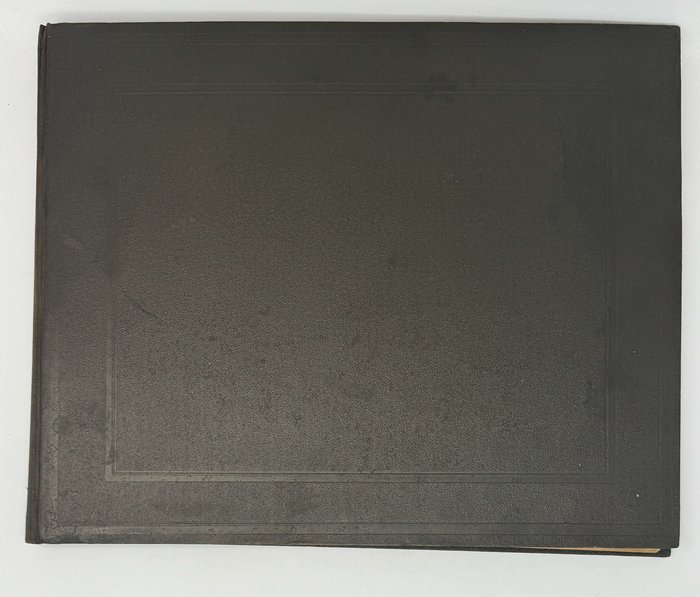
#PF25
Ca. late 1890s-1900s
Oblong Elephant Folio (ca. 43 x 35 cm or 17 x 13 ¾ in). 26 double paper leaves (eight blank, one split). 84 mounted gelatin silver photographs from ca. 16 x 12 cm (6 ½ x 4 ½ in) to 11.5 x 8.5 cm (4 ½ x 3 ¼ in). 36 images with period French pencil captions on mounts; one image captioned in negative. Period brown cloth album with blind-stamped borders on the boards. Boards and mounts slightly waved; mounts with water stains on extremities; a few photographs mildly faded, but overall a very good album of interesting strong photos.
A collection of 84 gelatin silver photographs showing Madagascar, including portraits of local rulers, nobility, and Malagasy people and views of their villages, at the turn of the 20th century.
The French protectorate of Madagascar (the Malagasy Protectorate) was declared in 1882, in an attempt to control the country’s foreign affairs and justified by land claims on surrounding islands. Sovereigns of the Merina Kingdom (Kingdom of Madagascar) disputed the declaration and rejected French demands and interference. In 1895, French forces occupied the capital city of Antananarivo and imprisoned Queen Ranavalona III (1861-1917) and Prime Minister Rainilaiarivony (1828-1896). Shortly after, the Merina Kingdom formally became a French protectorate. In 1897, it was annexed and became French Madagascar.
Nine photographs are portraits identified in the captions as being local rulers or their family, in mostly northern and central Madagascar. They include the queen of the Sakalava people, Binao (1867-1927, r. 1881-1927); the king of the Antankarana people, Tsialana II (ca. 1843-1924, r. 1883-1924), with his son and brothers; Betsileo princesses; the family of “Prince Ramaharo”; “Morozy, ancien roi [former king] Sakalava” and “Vazoho, ancien roi Sakalava”; and the “king” or “chief” of Beleny. Two portraits also show the “young princes” Abdallah and Halid of Anjouan (established as a French protectorate in 1886, became part of the French colony of Madagascar in 1908, gained independence as part of the Comoros in 1975), sons of “Prince Salim,” and their tutor. The caption also includes their dates of birth.
Over 50 photographs are general portraits of Malagasy people. Over 10 are captioned (“Katzaby, femme, Betsimisaraka”; “Yalman, femme de Ste. Marie”; “Antanibe – groupe des femmes Sakalava”; “Majunga, Sakalava, Mahajam,” etc.). Portraits include those of men and women wearing traditional dress and hairstyles, a man dressed as a warrior, a prisoner with a restraining device around his neck, and a group of male dancers for the “circumcision celebration” (a tradition among the Sakalava).
Other photographs in the album include scenes from village life (building a hut, one woman doing another’s hair, a market in Ambositra, etc.); views of Ambositra, a Tanala village, and a Betsileo village; a betsabetsa (a type of rum) mill; and Malagasy people panning for gold in a river. There are also photographs showing a Betsimisaraka tomb in Andevoranto, an Antambaoaka tomb in Mananjary, a Betsileo tomb, the interior of a tomb in Antananarivo, and a commemorative stele in Betafo. Three photographs show an event, possibly at a school, featuring musicians, dancers, children, and Malagasy youth dressed in military uniform.
Overall, an interesting and lively collection of photographs showing Madagascar at the turn of the 20th century.

